- Plenty of safety kit
- Rear seat and boot space galore
- Comfortable to drive
- Engine is very thirsty
- Some equipment missing
- Wireless CarPlay connectivity issues
The continued trend of SUVs dominating the hearts and wallets of Australians has left numerous casualties on the new car market, notably sales of ‘small’ passenger cars have plummeted – dropping from being biggest selling market segment of all vehicles, to fifth place. While sales are significantly down, small cars are still an important part of the market, and here at DiscoverAuto, we’re big fans of the segment. What do we think of one of the offerings left – the 2022 Kia Cerato S with the safety pack? Let’s find out.
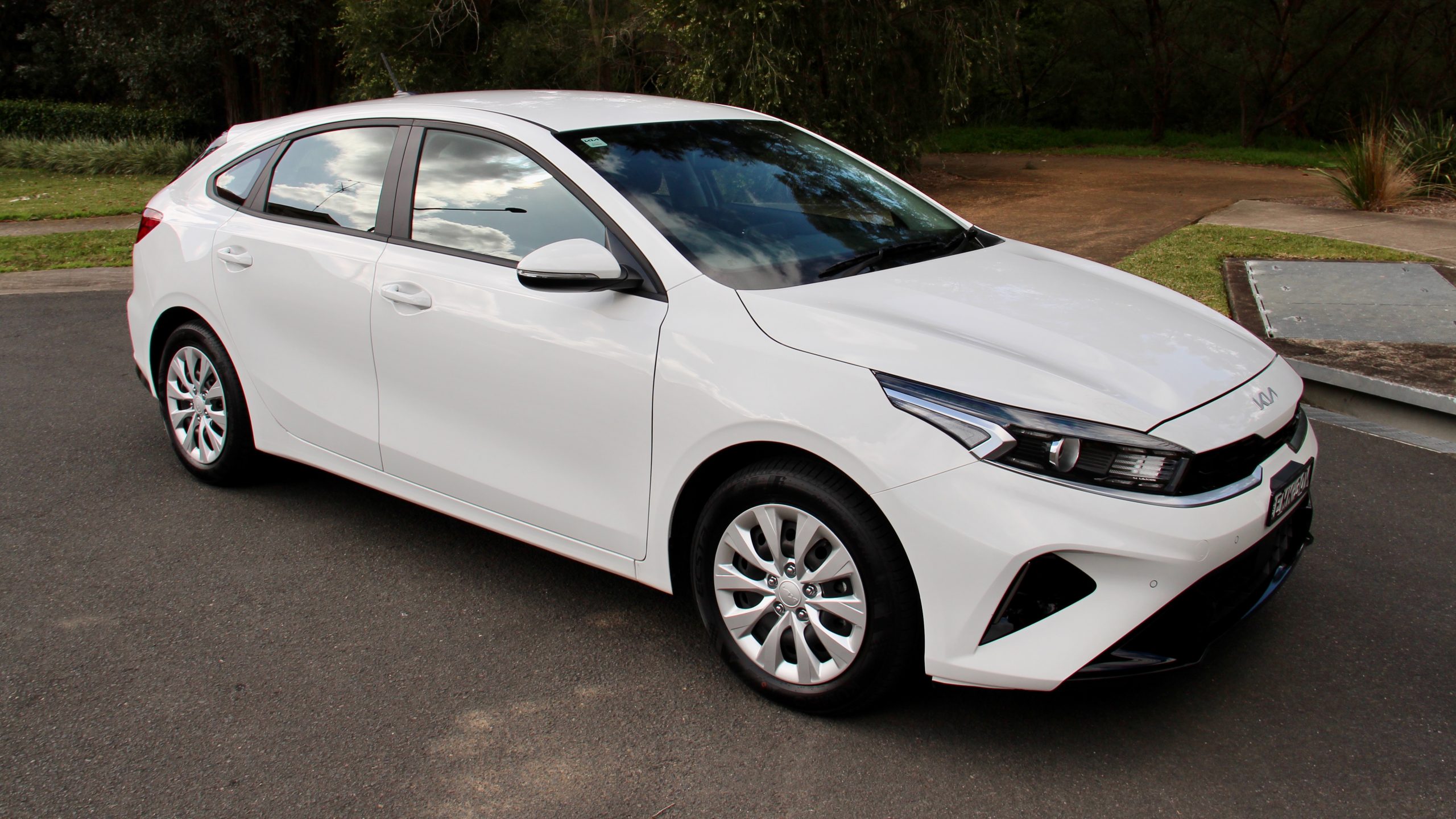
The four big players in the small car market are the Hyundai i30, Toyota Corolla, Mazda 3 and the Kia Cerato. Now in its fourth generation, which was introduced in 2018, the Cerato has changed and matured into quite the impressive vehicle, which we’ve tested in several guises. The Cerato received a mild facelift in 2021 in addition to a few price hikes since the 2018 introduction, so we were curious to see how it stands up in 2022. Read on to see our thoughts.
Price & Equipment: 8/10
Kia prices the Cerato ranging from $25,990 plus on-road costs to the flagship GT for $35,790 or $27,490 to $37,990 drive away. Our test car was the base Cerato S hatchback, kitted out with the optional Safety Pack. Recommended retail pricing is $26,990 and drive away pricing is currently $28,990. While Kia has increased the pricing of the Cerato over the last few years, this is the same for all of its competitors.
The 2022 Kia Cerato S hatch is equipped with 16-inch steel wheels, a 4.25-inch digital driver’s display, a 8-inch touchscreen with wireless Apple CarPlay and wired + wireless Android Auto, a six-speaker sound system, automatic halogen headlights, LED daytime running lights, halogen rear fog light, heated mirrors, a six-way manually adjustable driver’s seat, manual air-conditioning, rear vents, cruise control, 3x USB chargers and a burglar alarm.
The optional Safety Pack bolsters the equipment list with bigger rear brakes, an electronic parking brake with auto hold functionality, auto-folding side mirrors and a leather steering wheel and gear shifter.
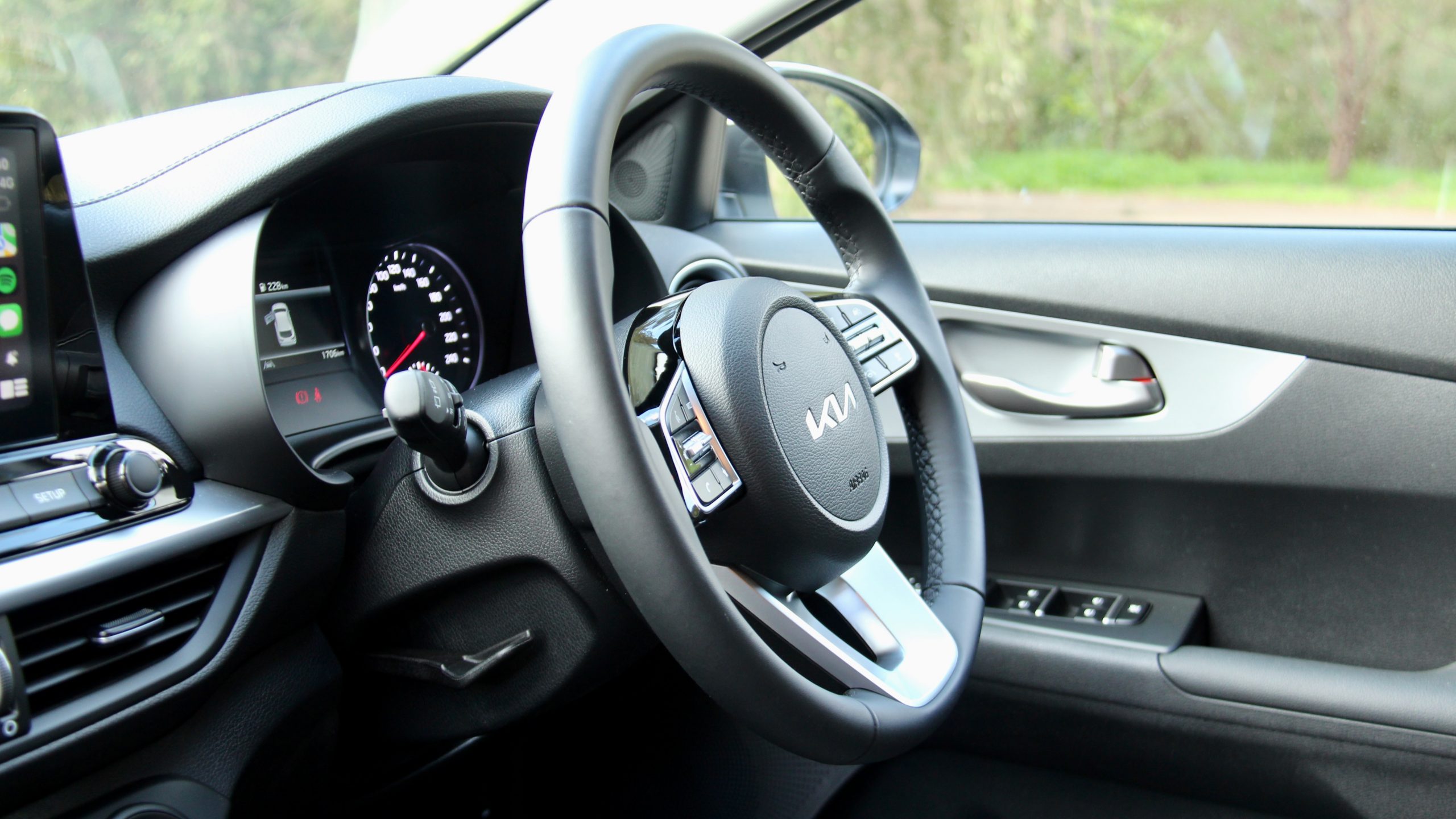
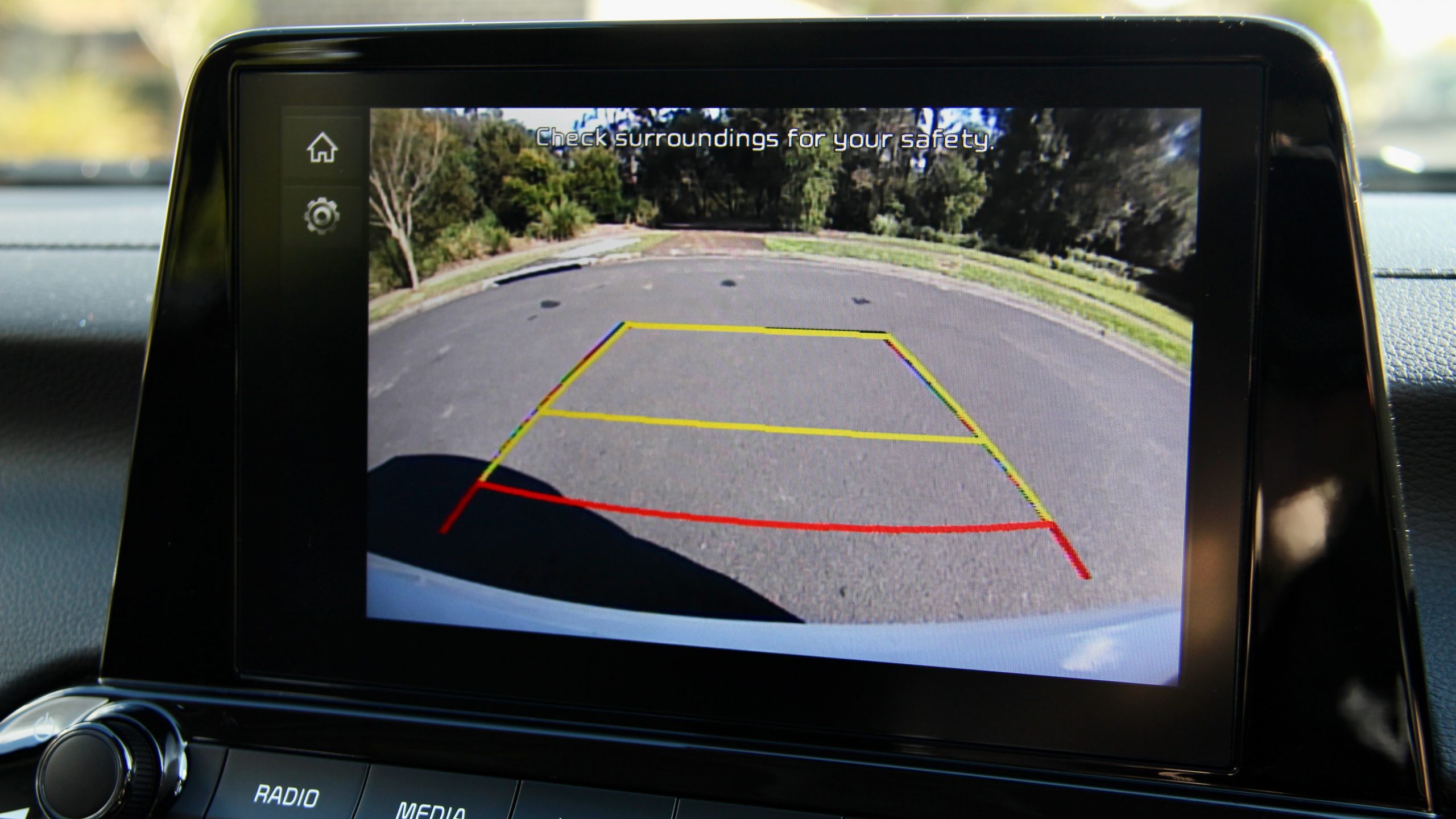
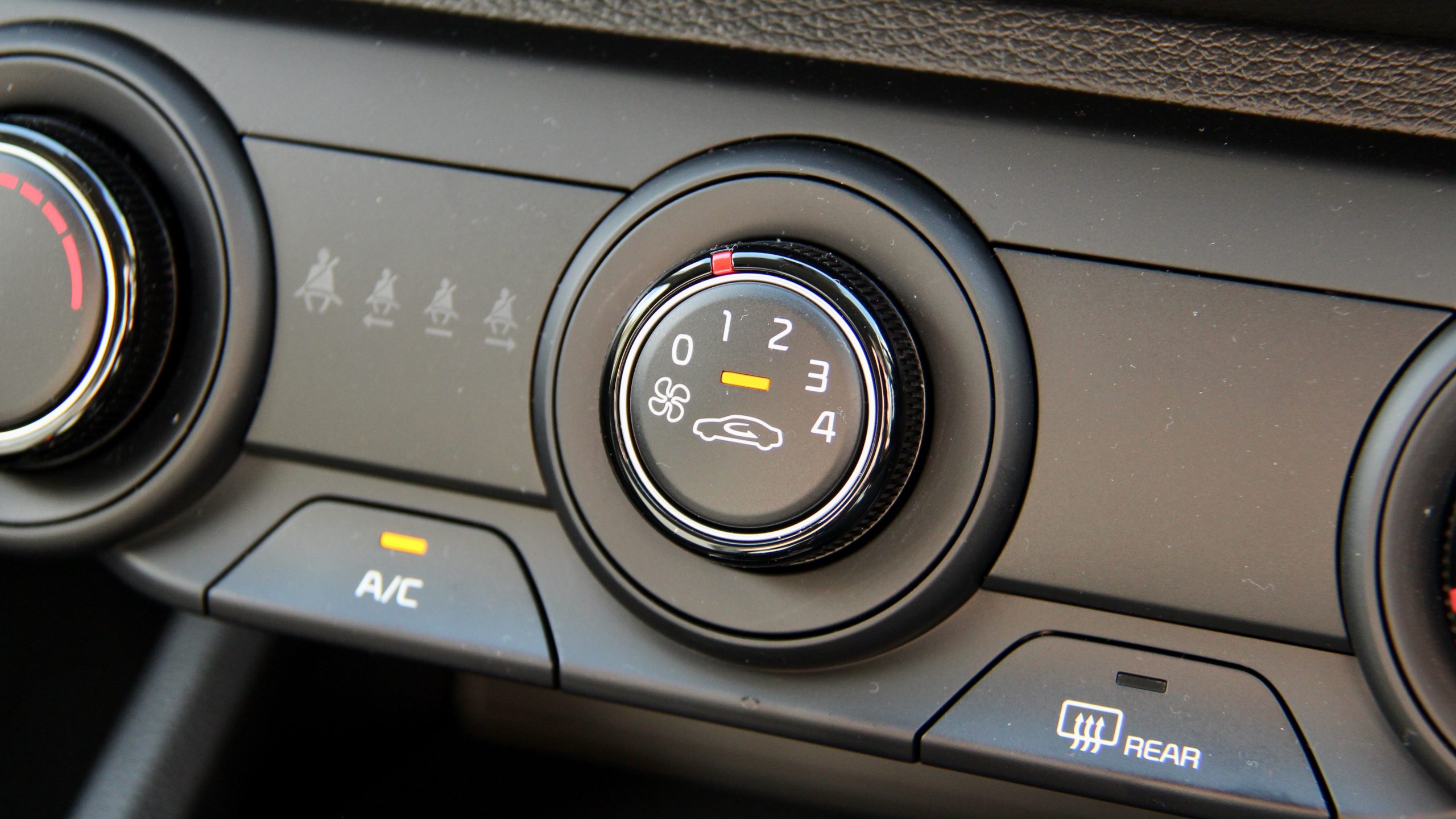
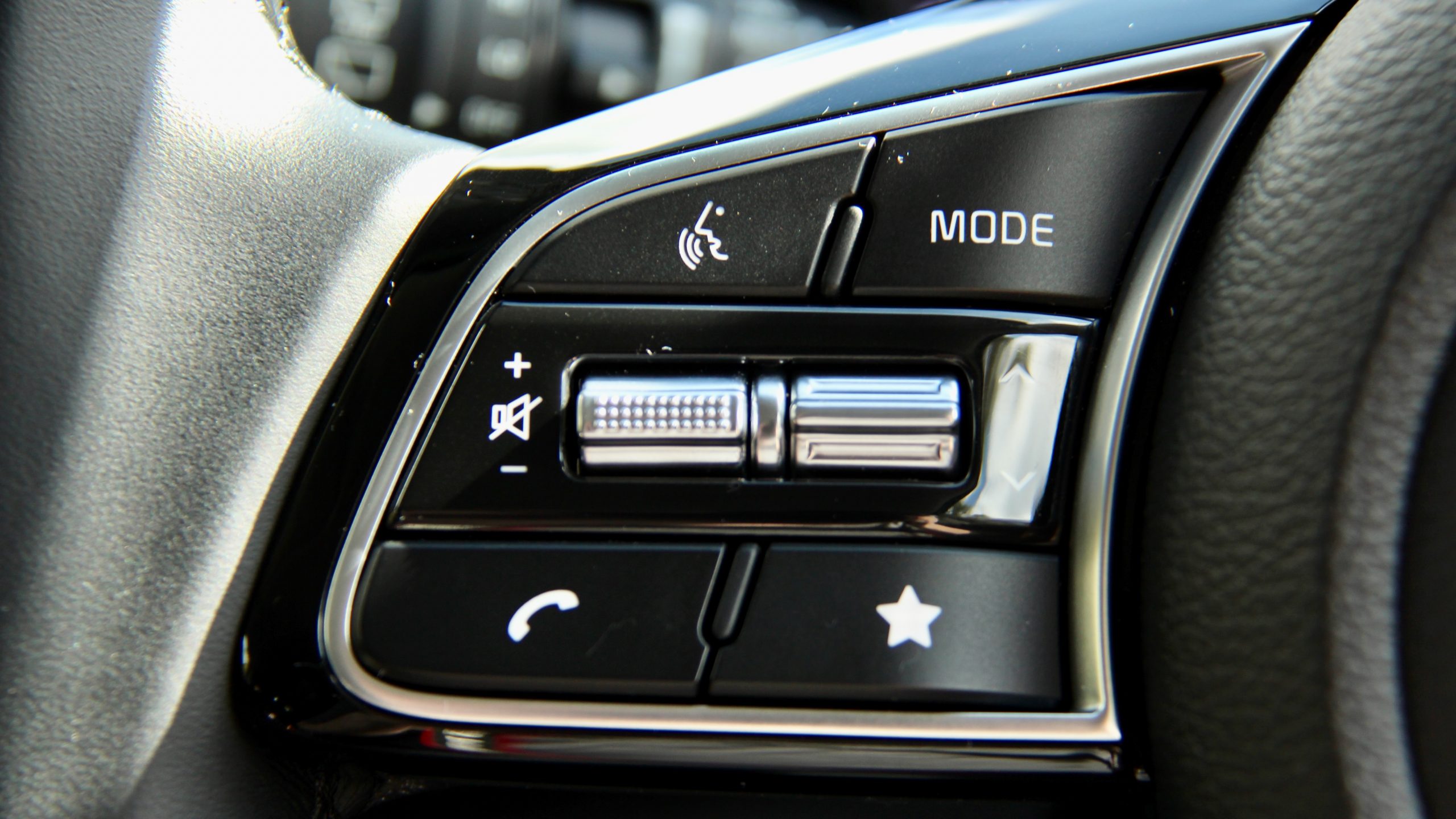
Safety wise the Cerato S hatch is fitted with six airbags (dual front, dual front side and curtain airbags to both rows), front and rear parking sensors, a reversing camera, a tyre pressure monitoring system, automatic emergency braking (AEB) with car and pedestrian detection, lane departure warning with lane keep assist, driver fatigue monitoring, rear occupant reminder and automatic high beam.
This standard safety equipment earns the Cerato S hatch a four-star ANCAP rating. On top of the aforementioned features, the Safety Pack also adds the following safety features, including; adaptive cruise control, cyclist detection for the AEB system, blind-spot monitoring with rear-cross traffic alert and safe exit warning – these features bumps the ANCAP rating to five stars. It’s necessary, in our opinion.
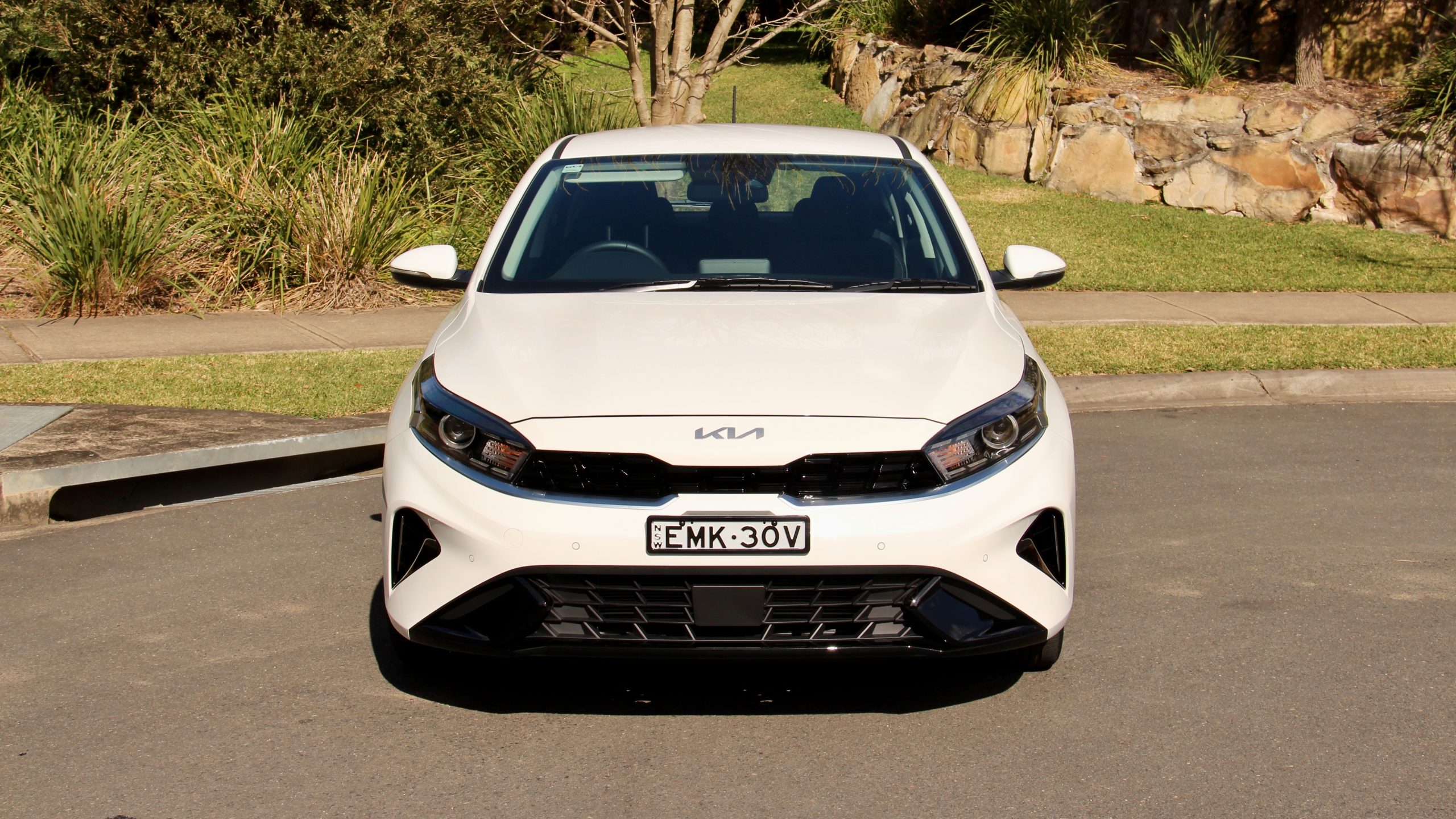
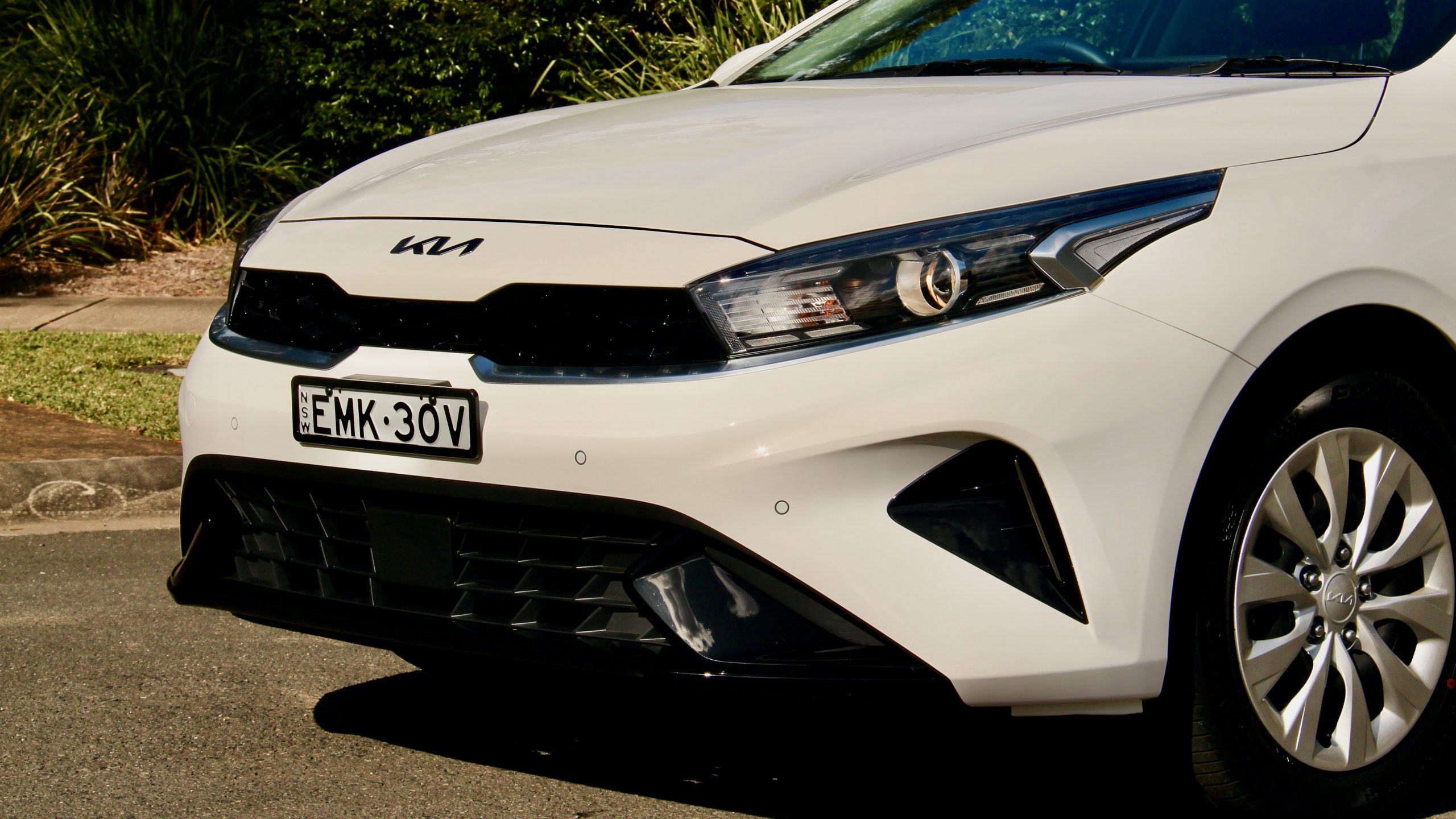
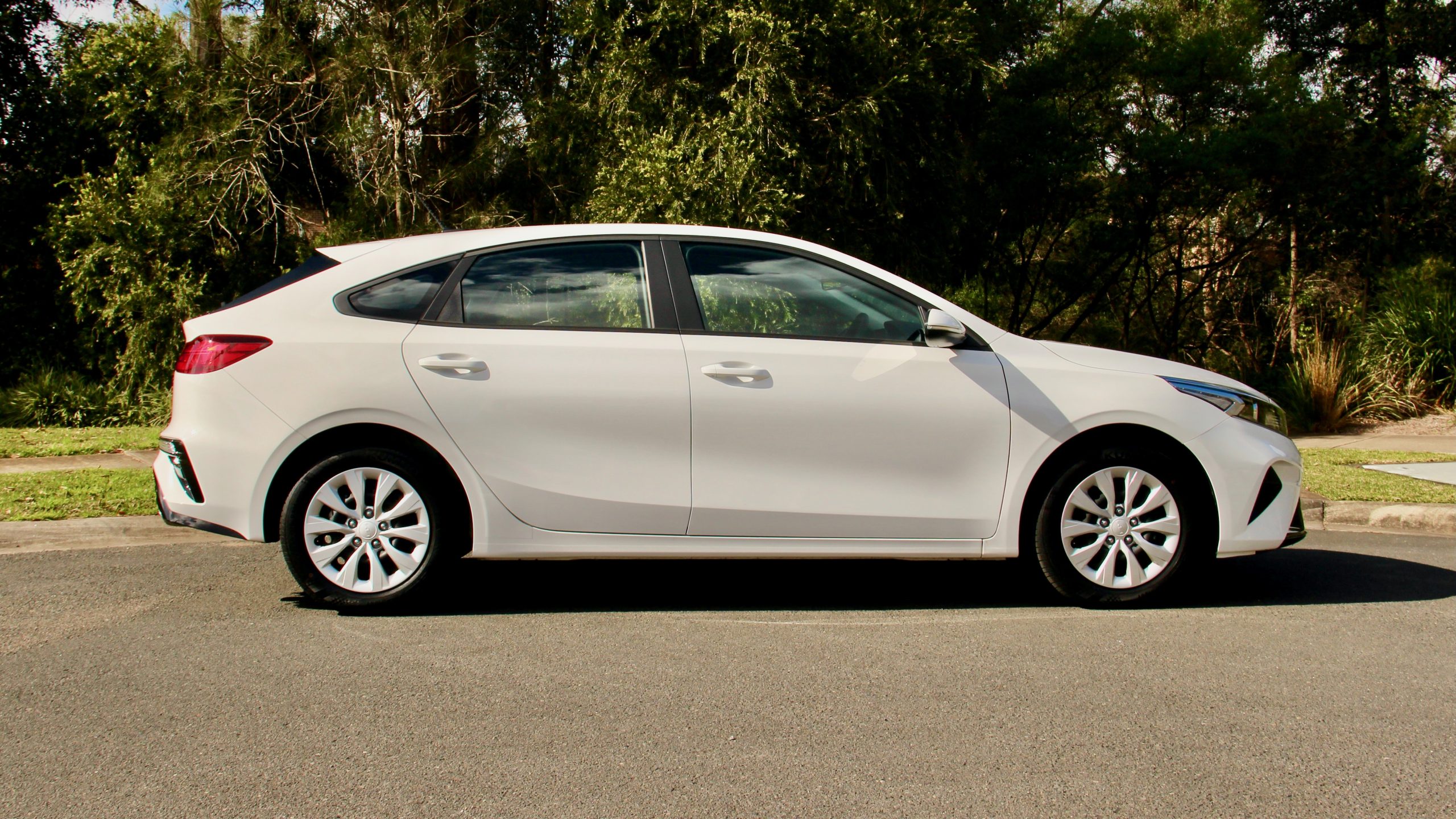
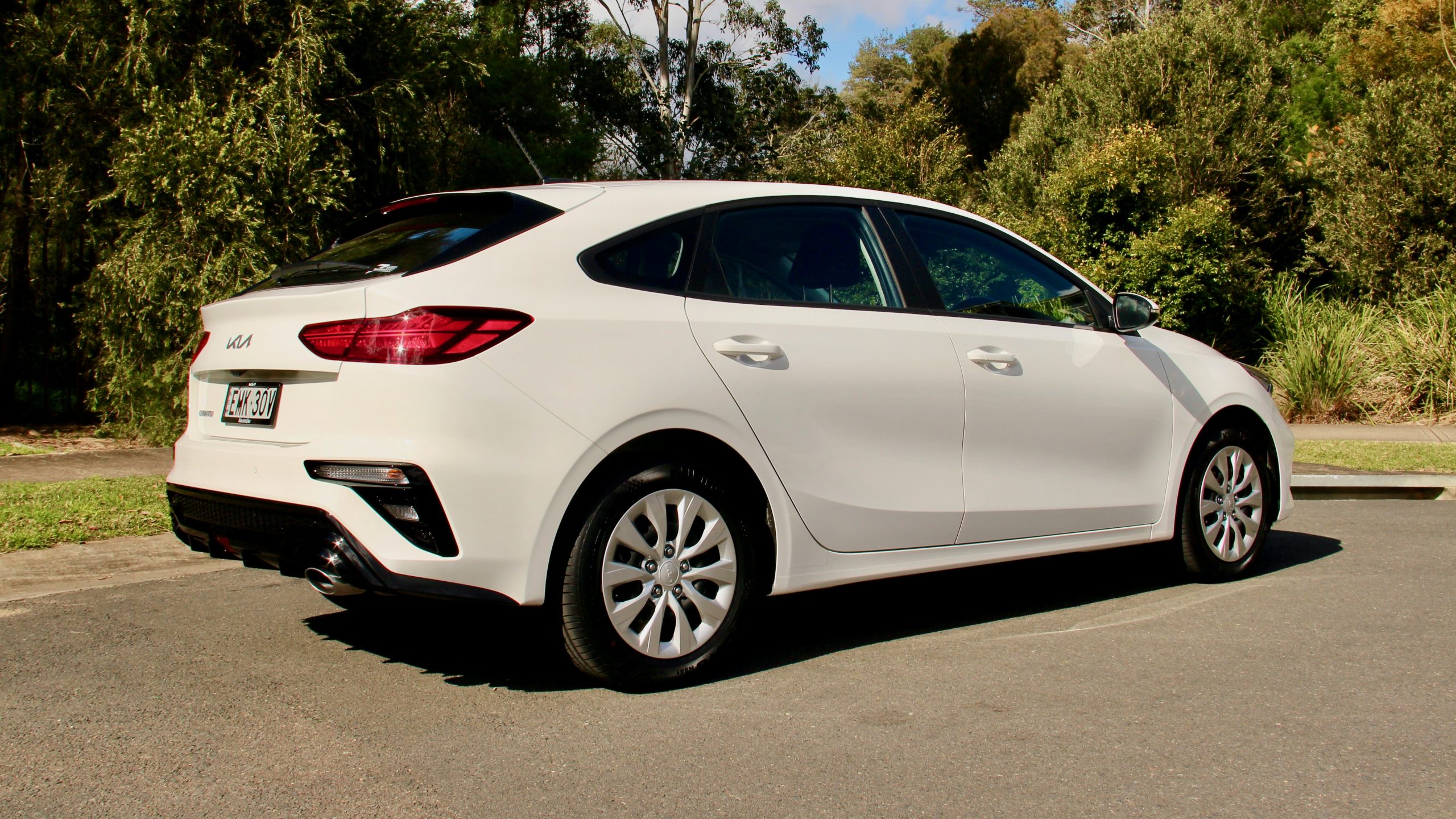
The Cerato S with Safety Pack competes with a number of other small hatches, including the Hyundai i30 hatch, priced at $27,990 drive away and the Corolla Ascent Sport hatch, which is $28,982 drive-away (depending on location). Compared to the i30, the Cerato S Safety Pack bests it by including a rear fog light, an additional two USB charging points, front parking sensors, rear occupant alert, rear cross traffic alert, blind spot monitoring and safe exit warning. The i30 fights back with alloy wheels instead of the steel with hubcap wheels on the Cerato, a much larger 7-inch driver’s display and a knee airbag.
Compared to the Corolla, the Cerato has wireless CarPlay and Android Auto, auto-folding side mirrors, a burglar alarm, leather covering for the steering wheel and shifter, front and rear parking sensors, a tyre pressure monitoring system, driver fatigue monitoring, rear occupant alert, rear cross-traffic alert, blind spot monitoring, a safe exit warning system and rear air vents – which are all missing on the Corolla, in addition to 2 extra USB charging points. The Corolla on the other hand has alloy wheels, all-LED lighting, automatic up/down power windows, a knee airbag and speed sign recognition, which are not available on the Cerato S Safety Pack.
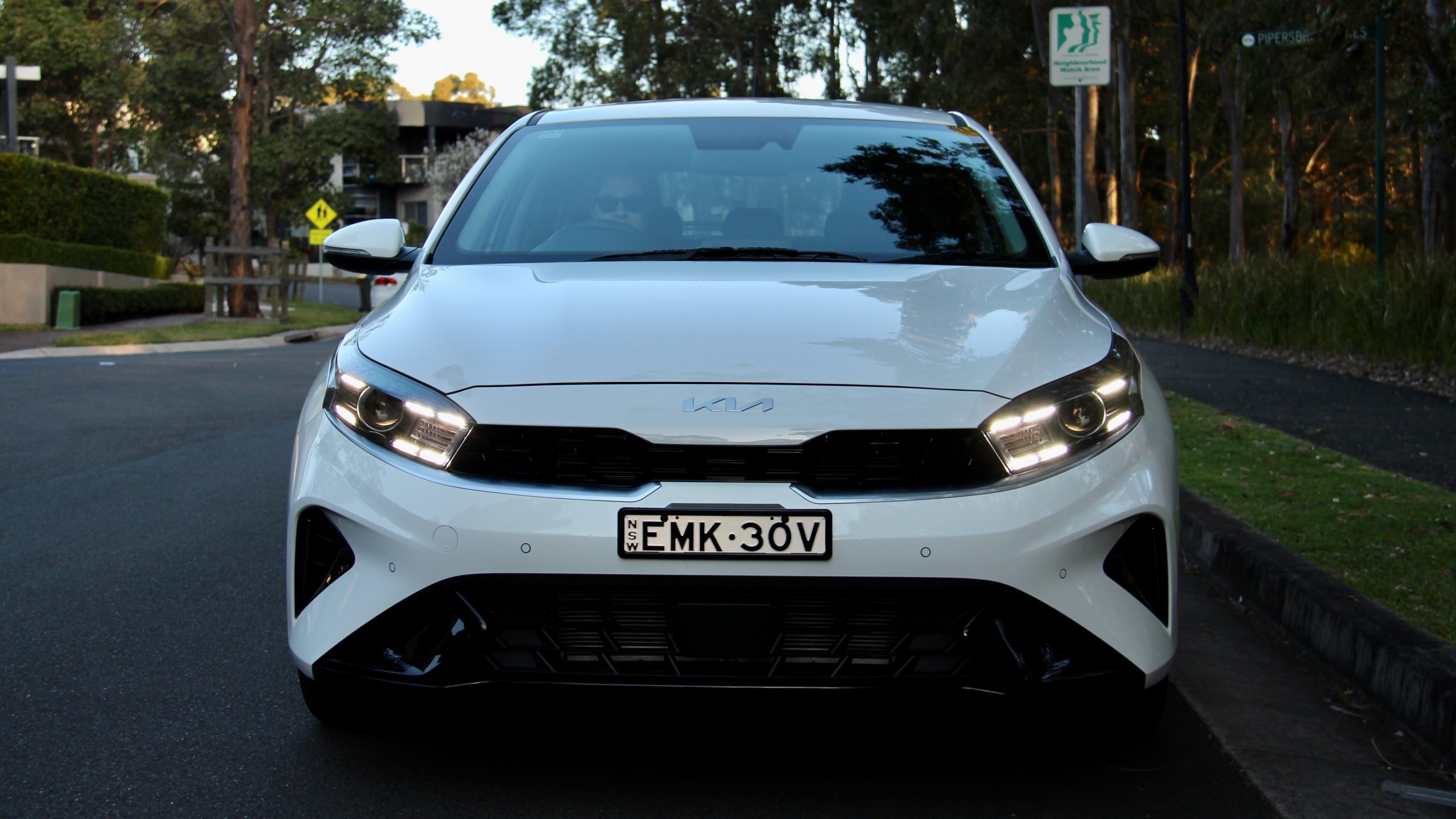
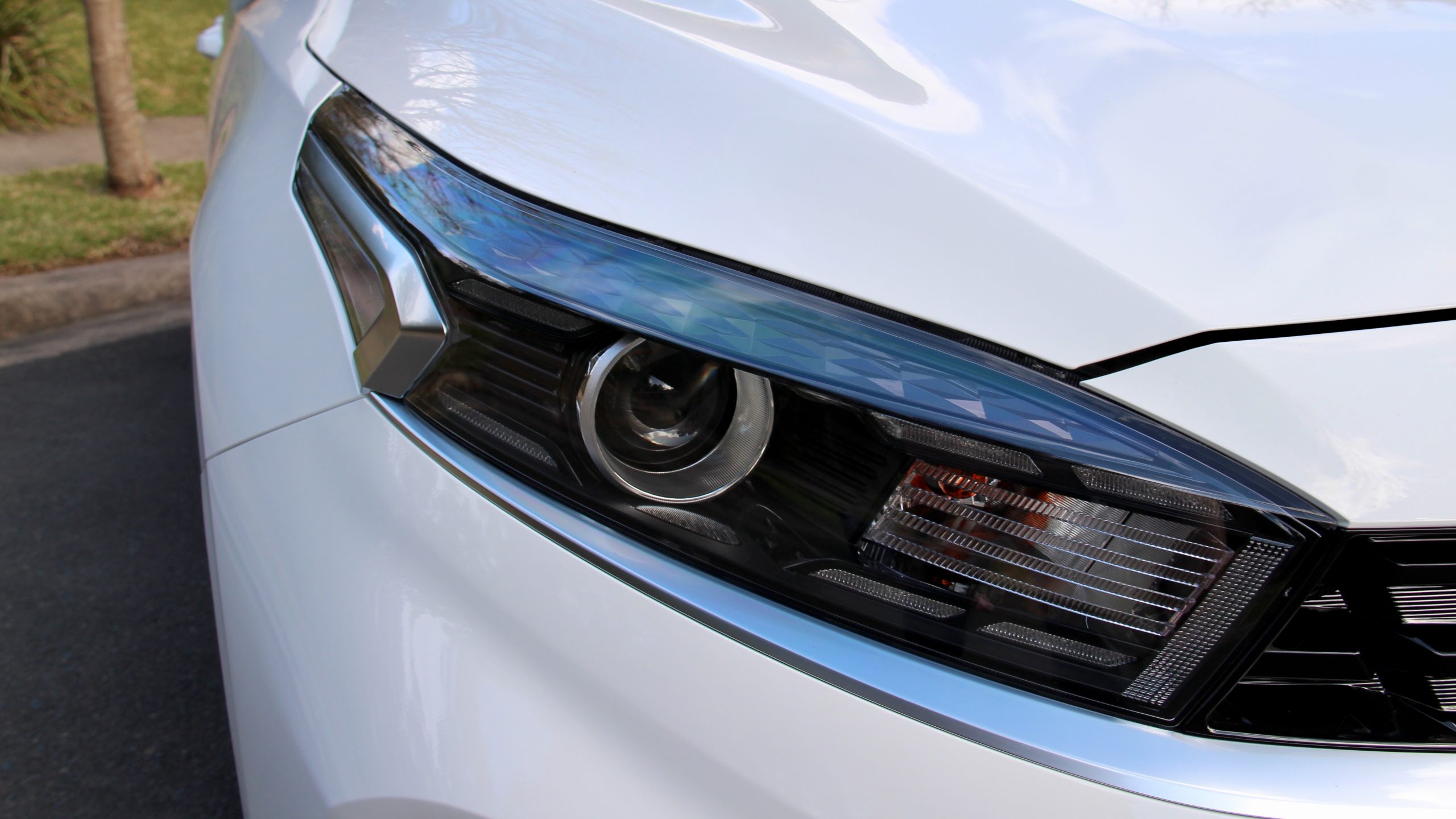
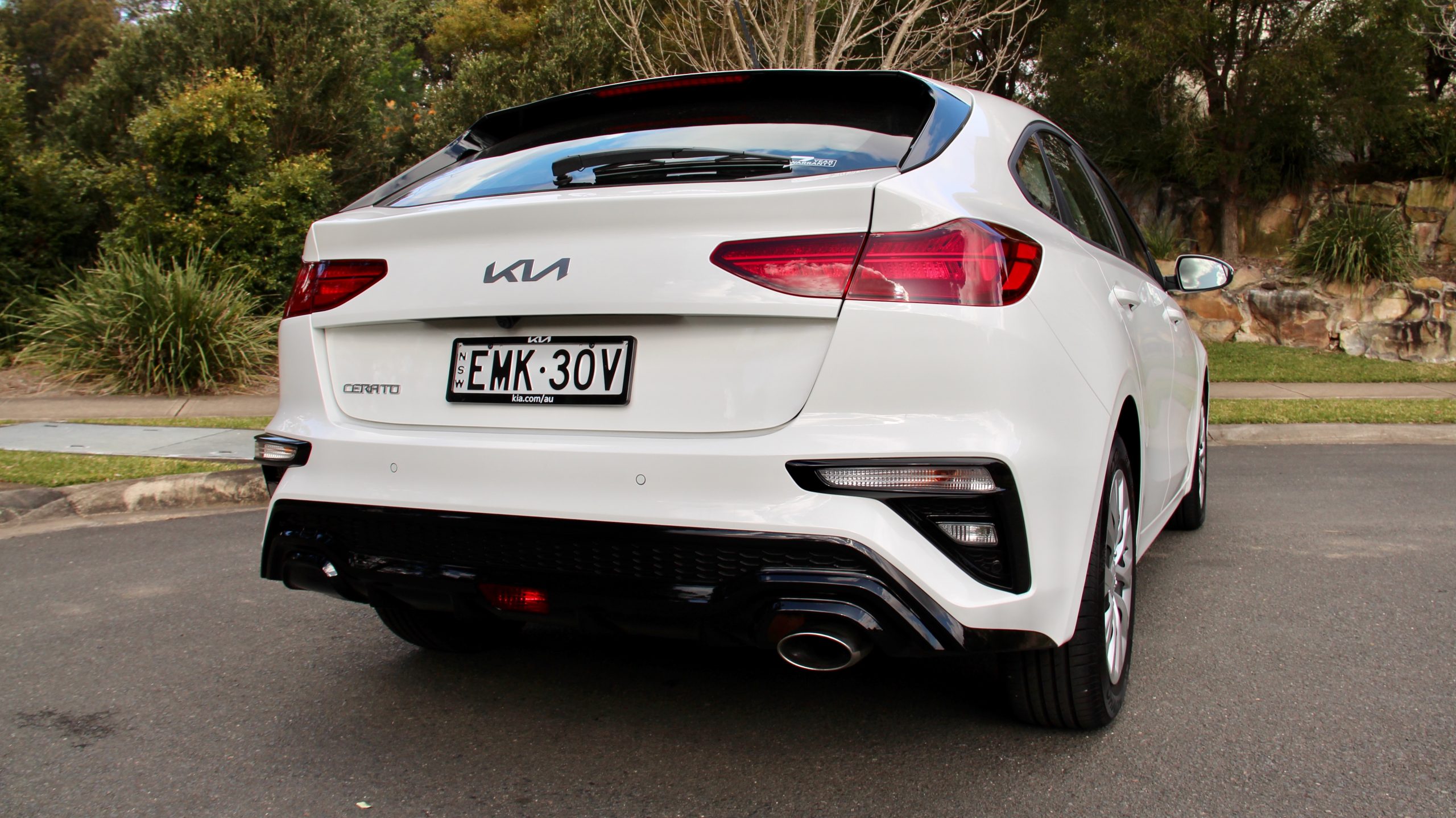
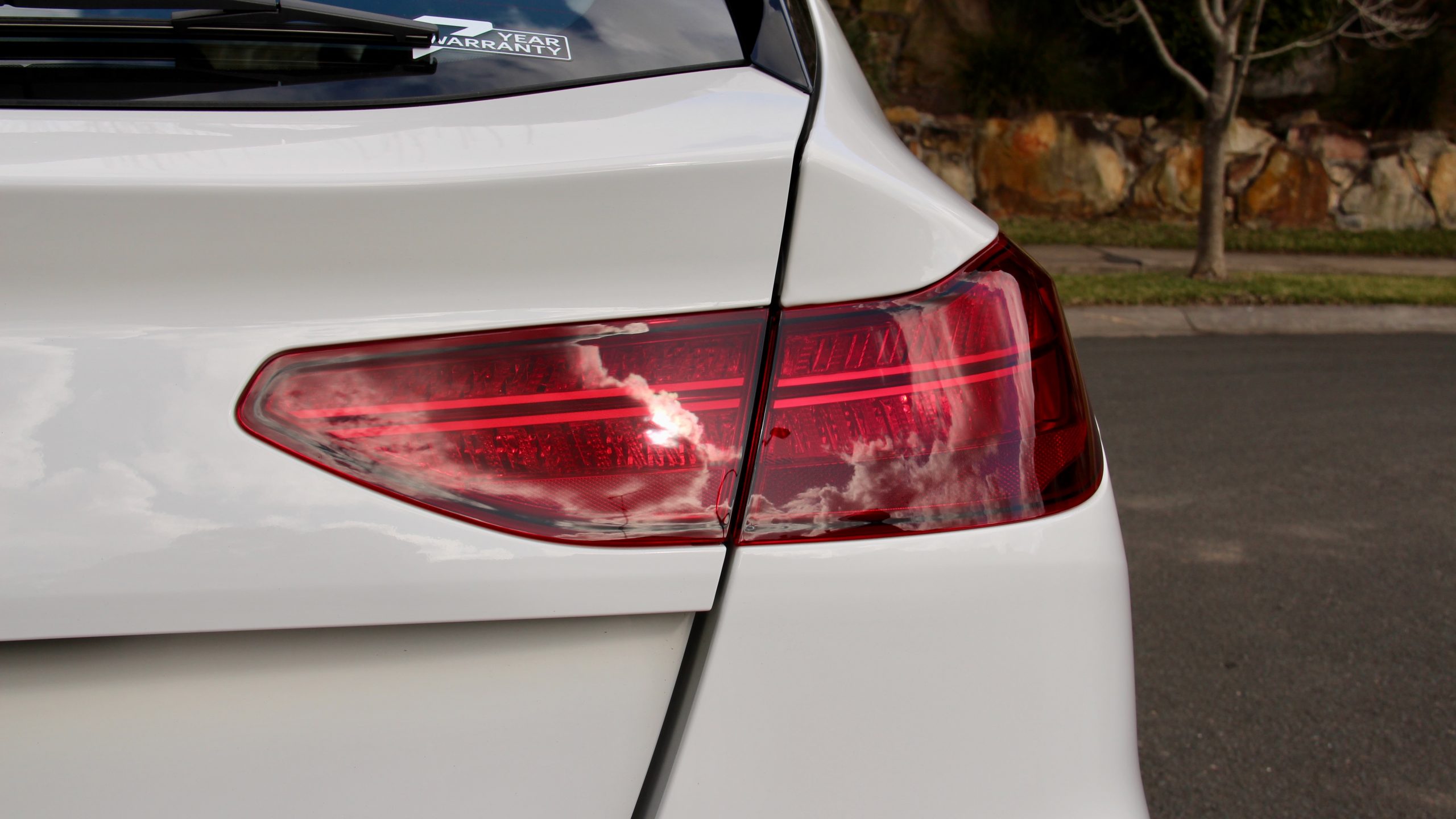
Overall the Cerato in this guise is pretty well equipped, with plenty of safety features. We do however think that LED headlights, alloy wheels and a larger driver’s display would complete the package. Also Kia – it’s 2022 – the safety pack really should be standard equipment!
Performance & Economy: 7/10
Under the bonnet of the Cerato sits a 2.0-litre naturally aspirated four-cylinder petrol engine, which has been powering the Cerato for close to eight years now. It develops 112kW of power (at 6,200rpm) and 192Nm of torque (at 4,000rpm), mated to a traditional six speed torque converter transmission – no fancy CVT or DCT here! This engine and transmission combination is the only option for the Cerato S – sadly for lovers of the clutch, the manual is no longer available.
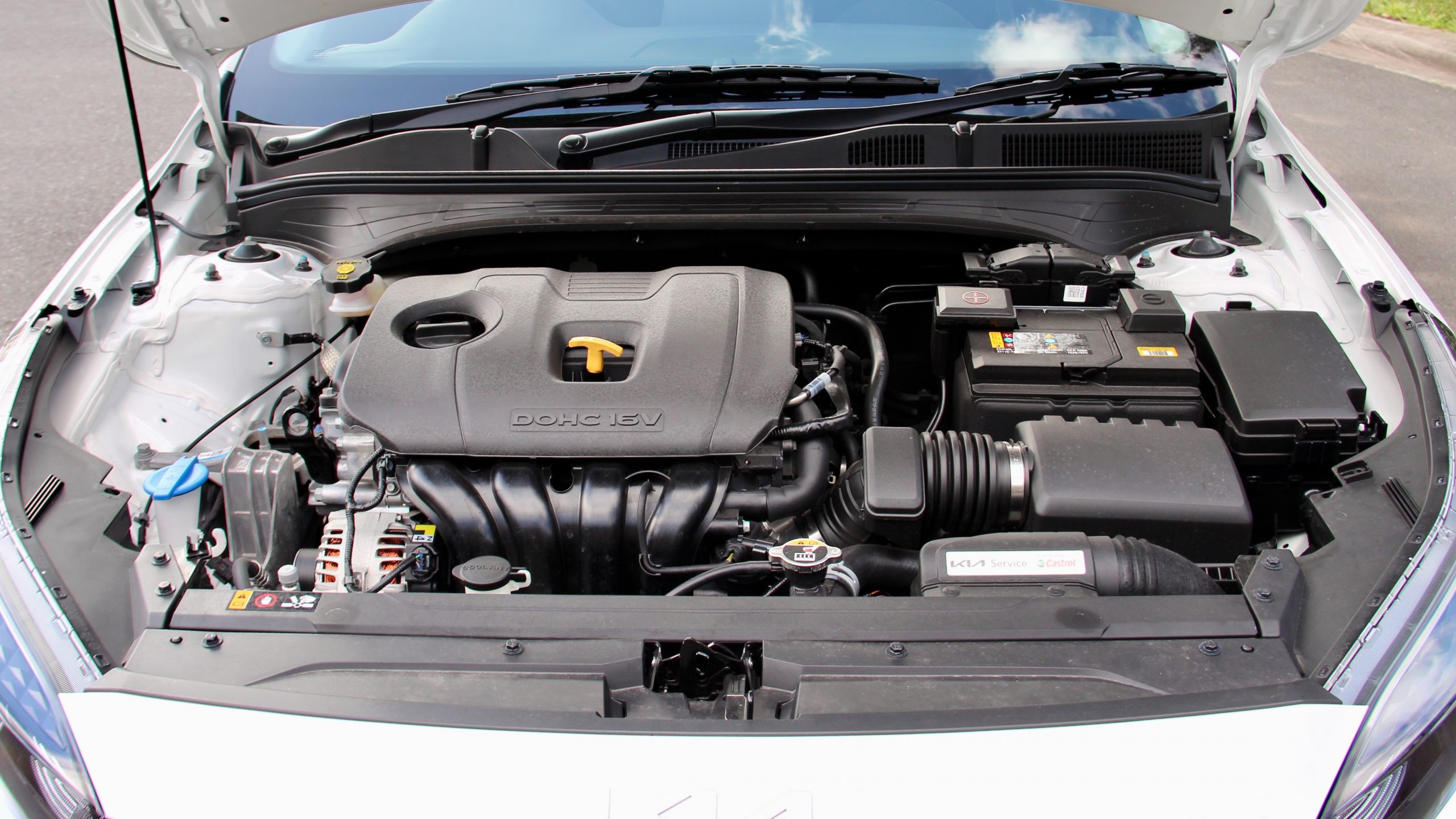
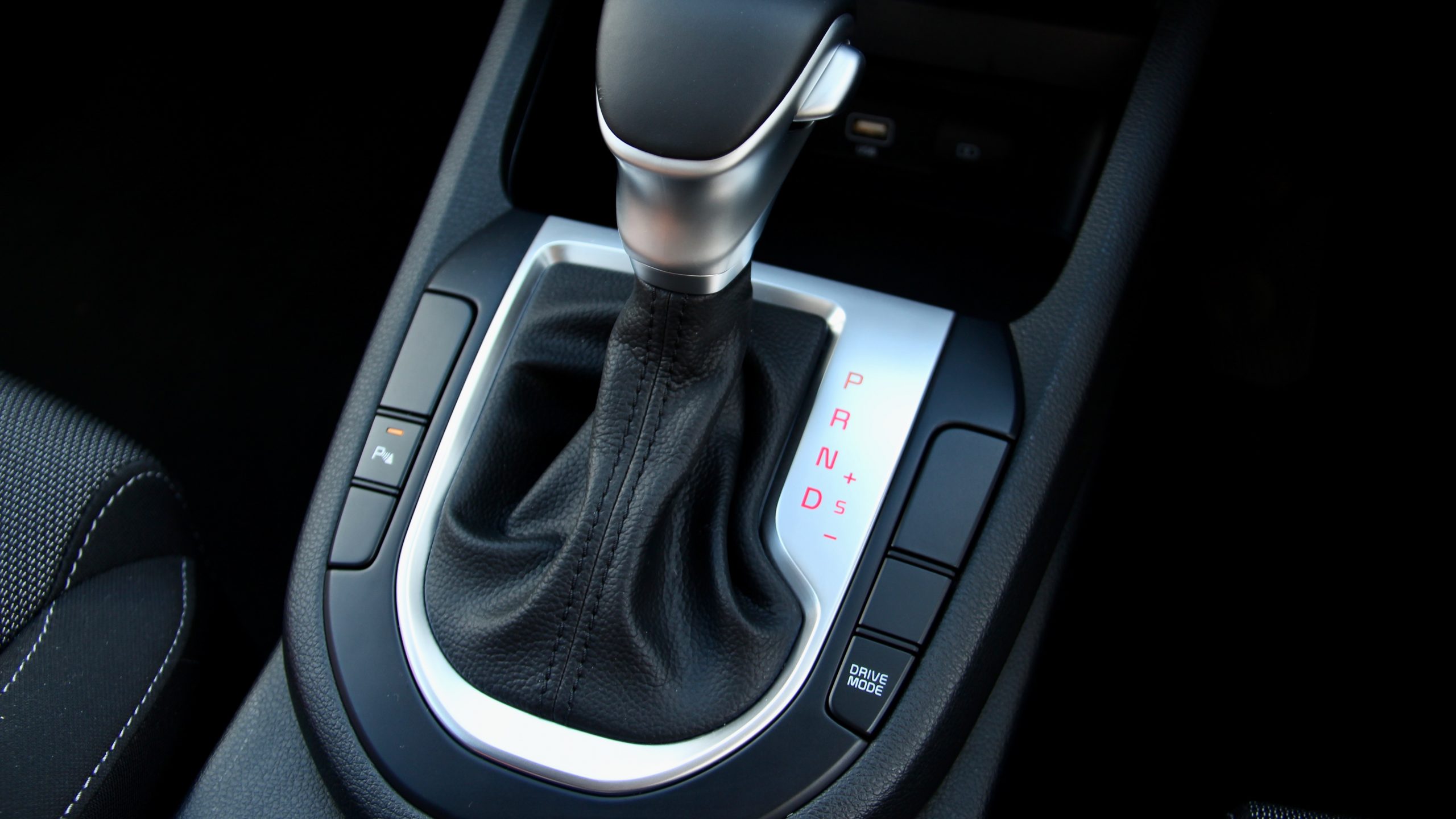
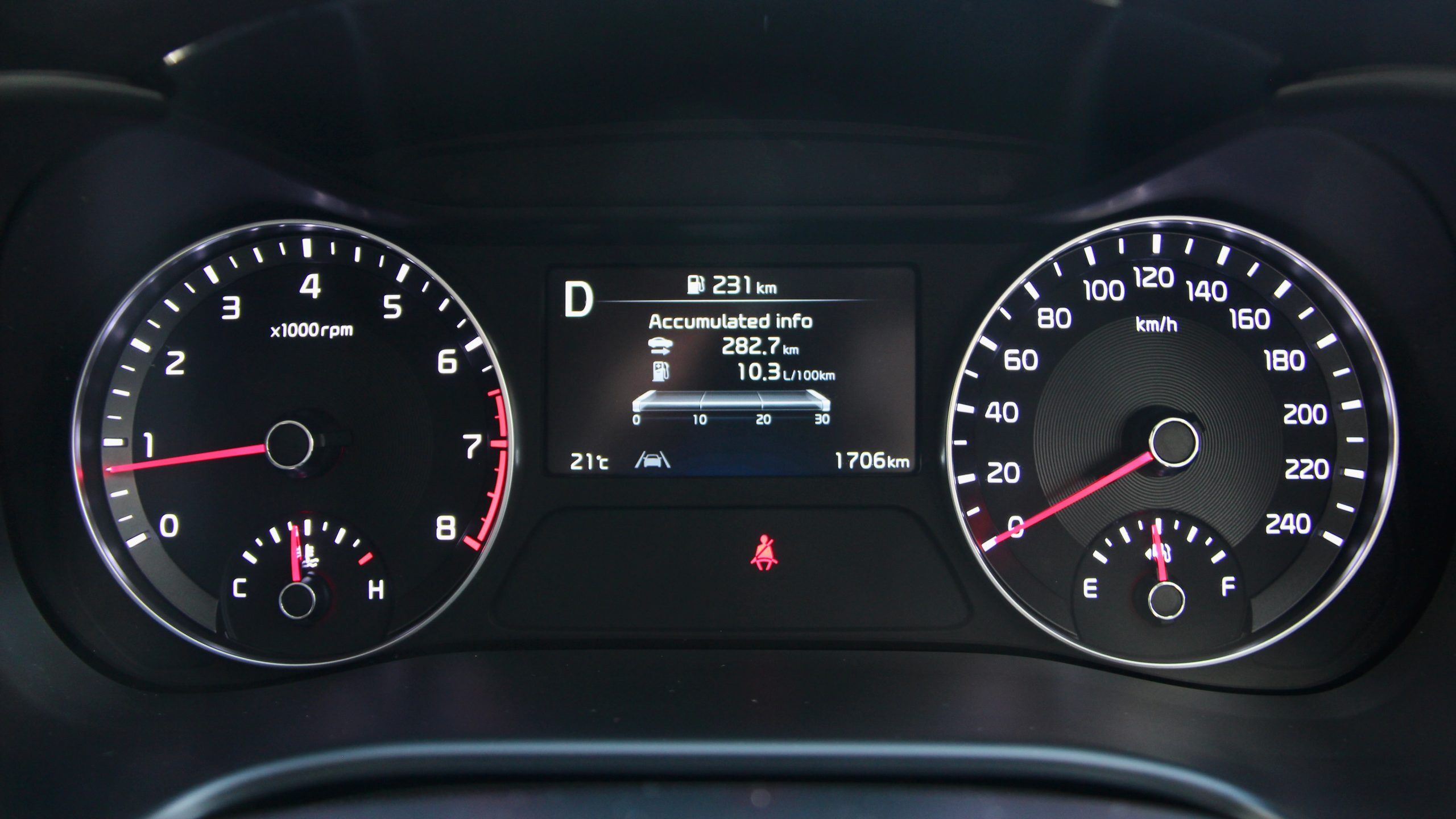
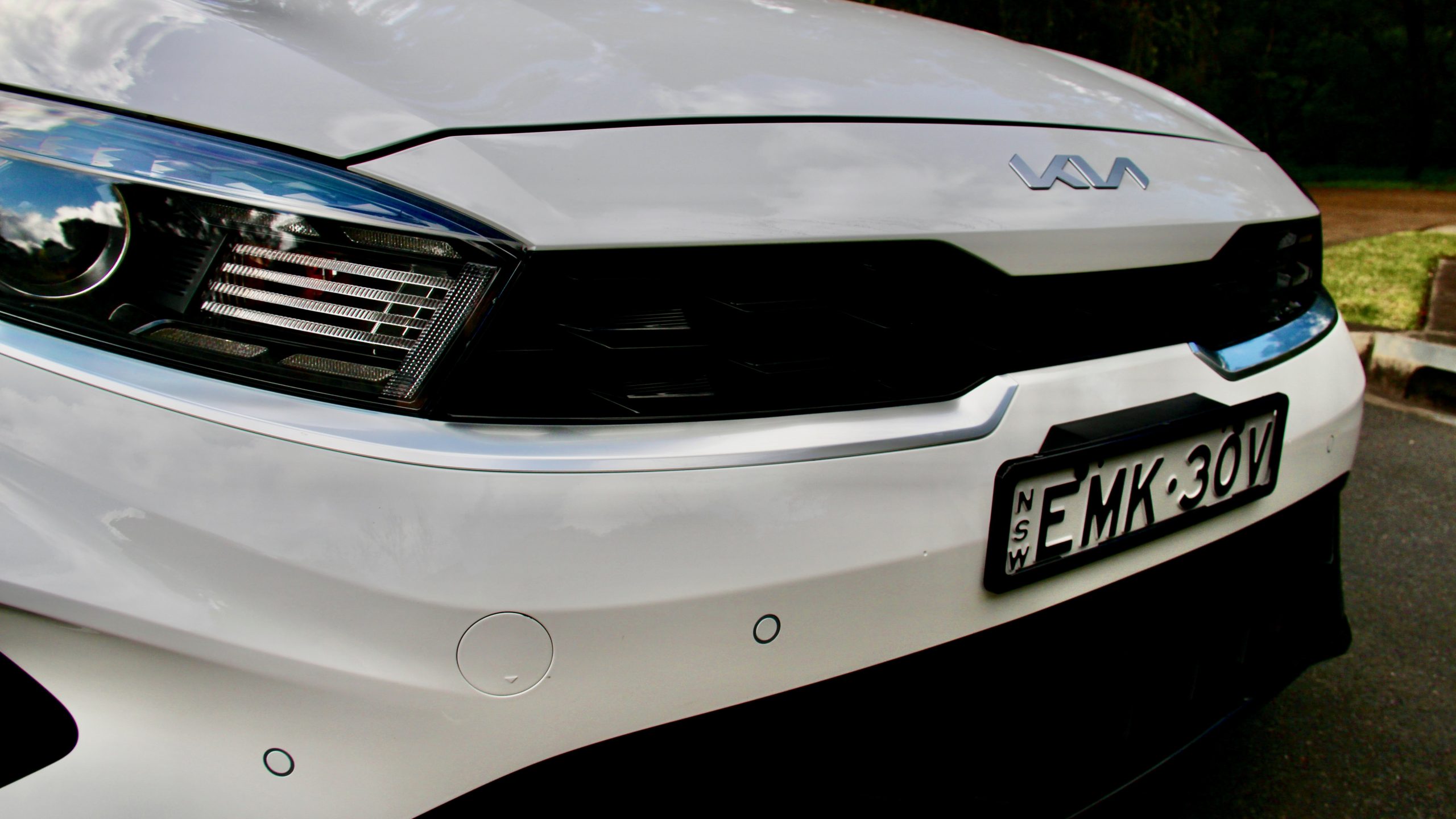
The drivetrain is more than capable of getting the Cerato up to speed, especially around town – and it doesn’t struggle too much on the highway and can comfortably overtake when needed as long as the conditions are right. However, while capable, the way in which the engine carries out its duties is the weak link. A lack of refinement becomes evident as the revs climb and the thrashy nature of the engine is revealed. Not only is it thrashy, but at times quite noisy. For the most part though, for around town duties getting from A to B, the experience is mostly inoffensive.
The transmission is, for the most part, quite good. While obviously not quite DCT fast, most of the time it shifts quickly and is intuitive – it rarely ever gets caught out or confused. The only downside in our testing is its habit of holding the second and third gears to a much higher rev point than expected. Other than that small quirk, Kia’s transmission is an example of how pleasant a simple torque converter automatic can be – kudos to Kia for resisting the temptation of putting a CVT or DCT in!
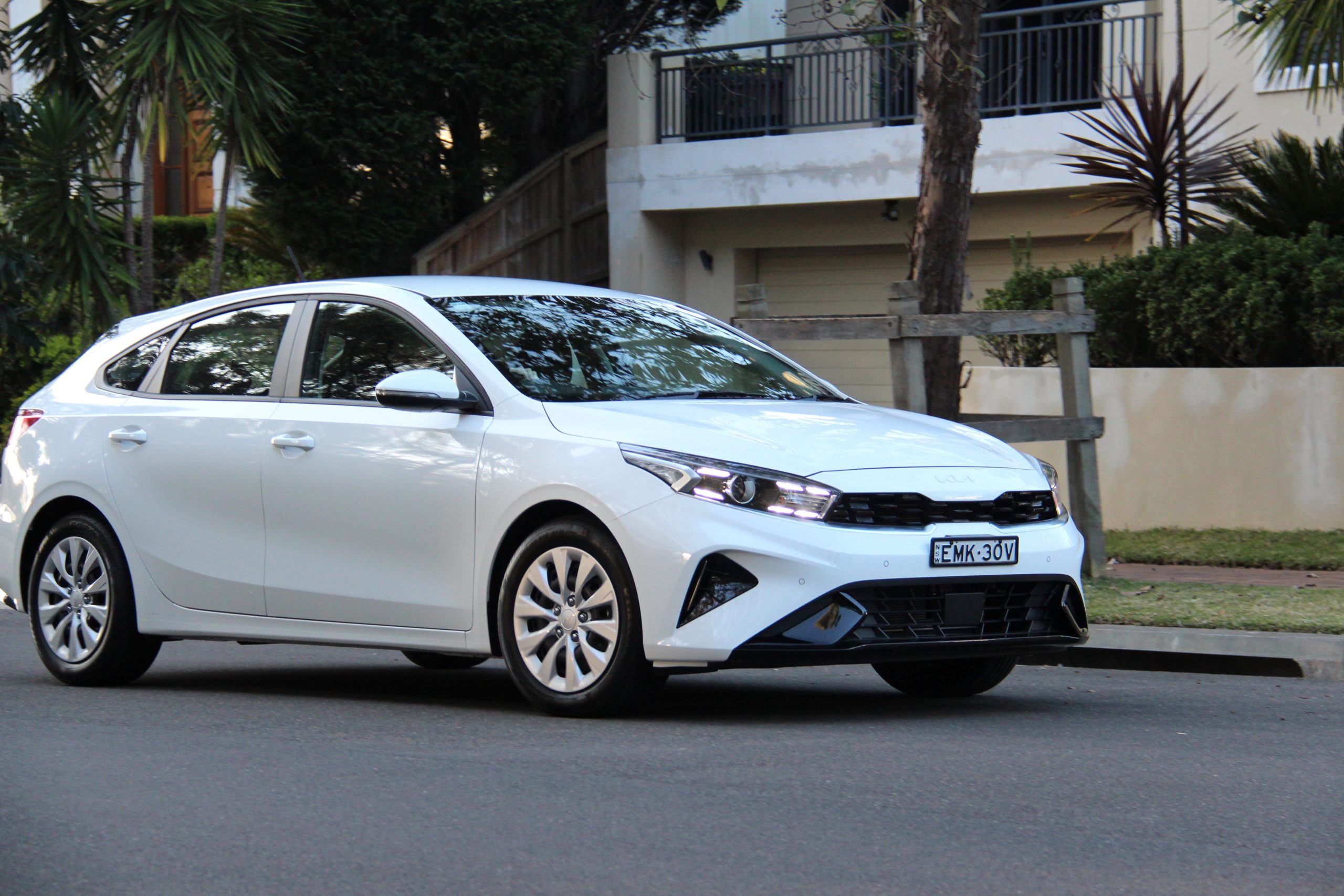
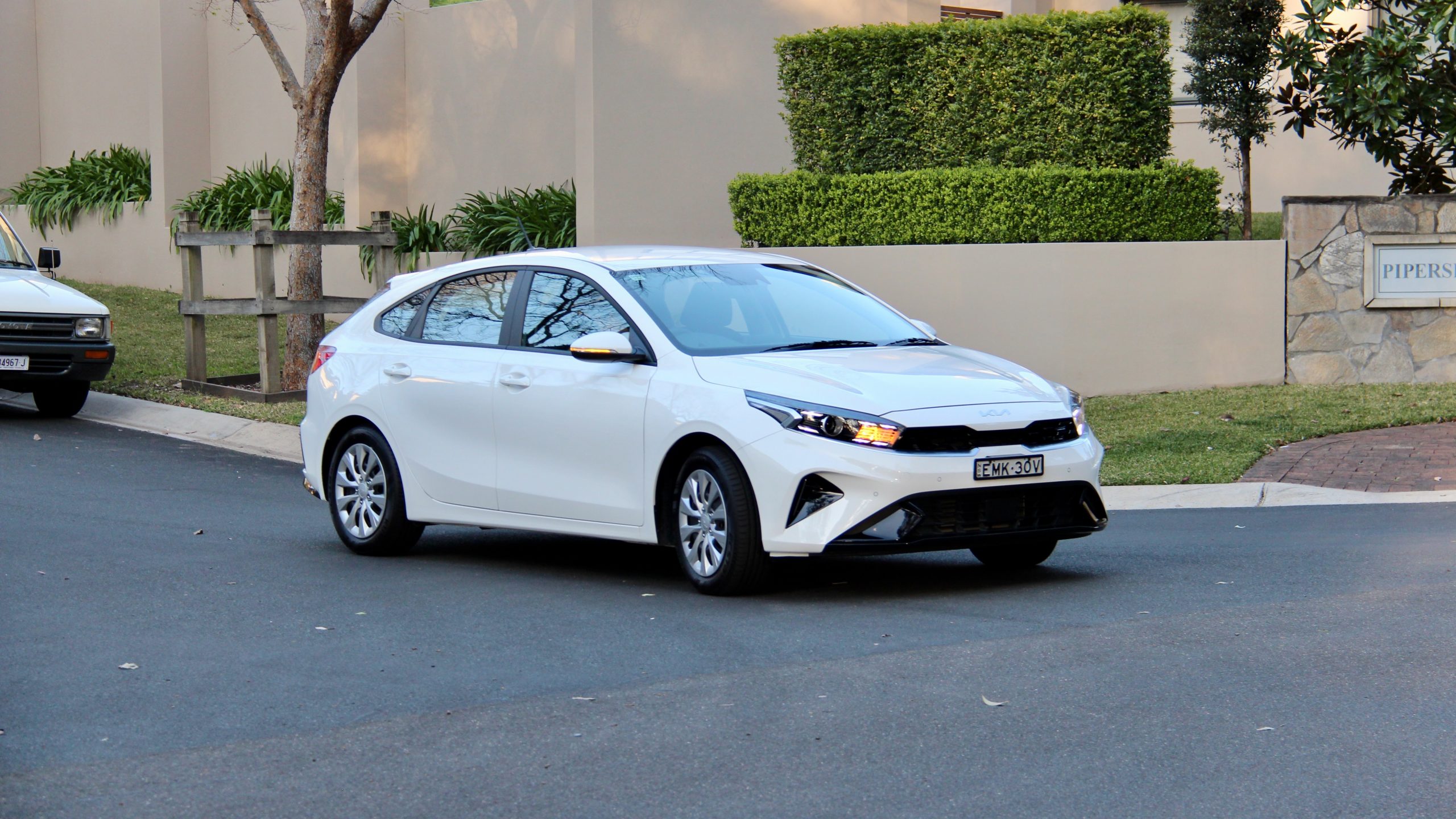
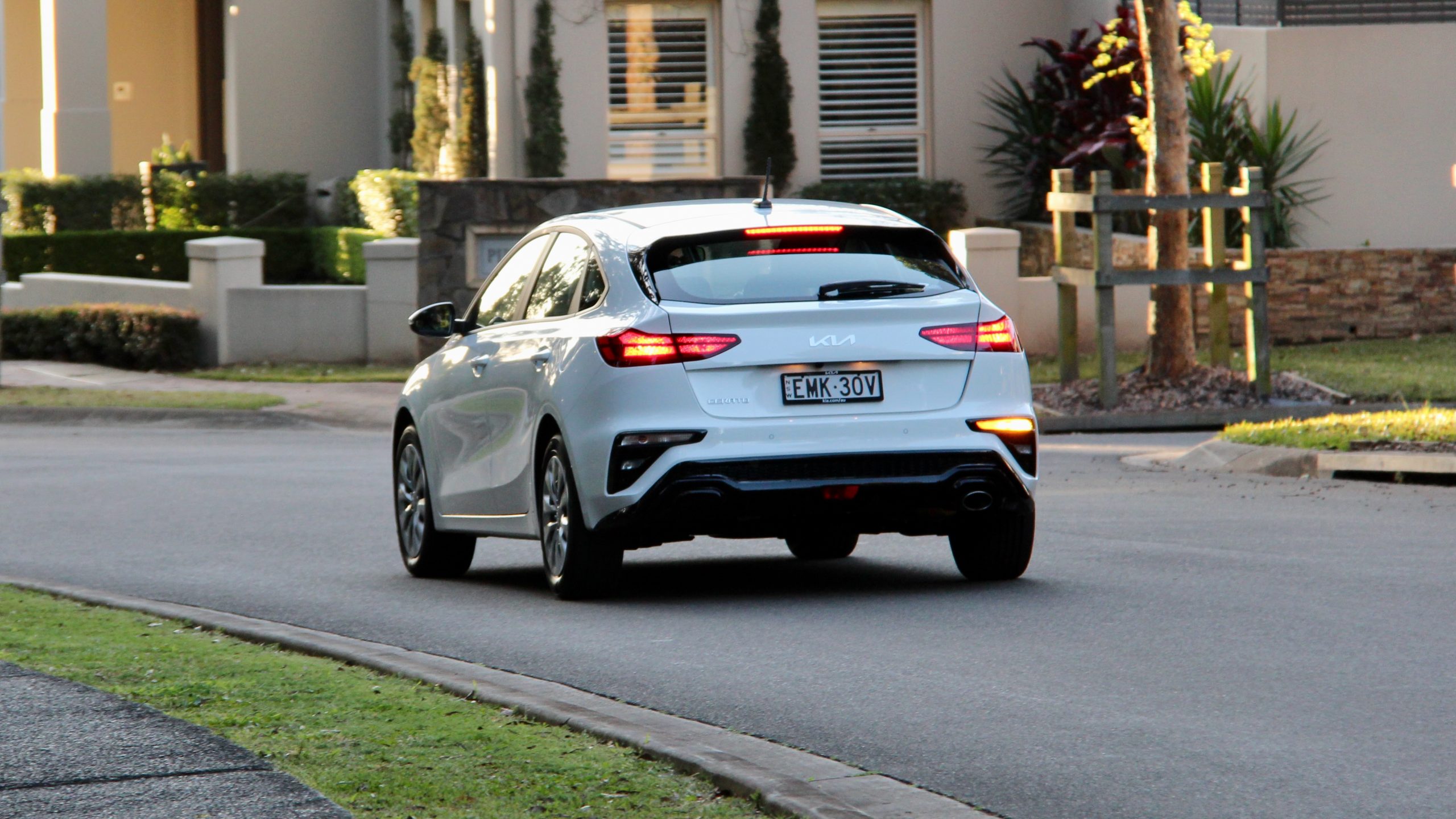
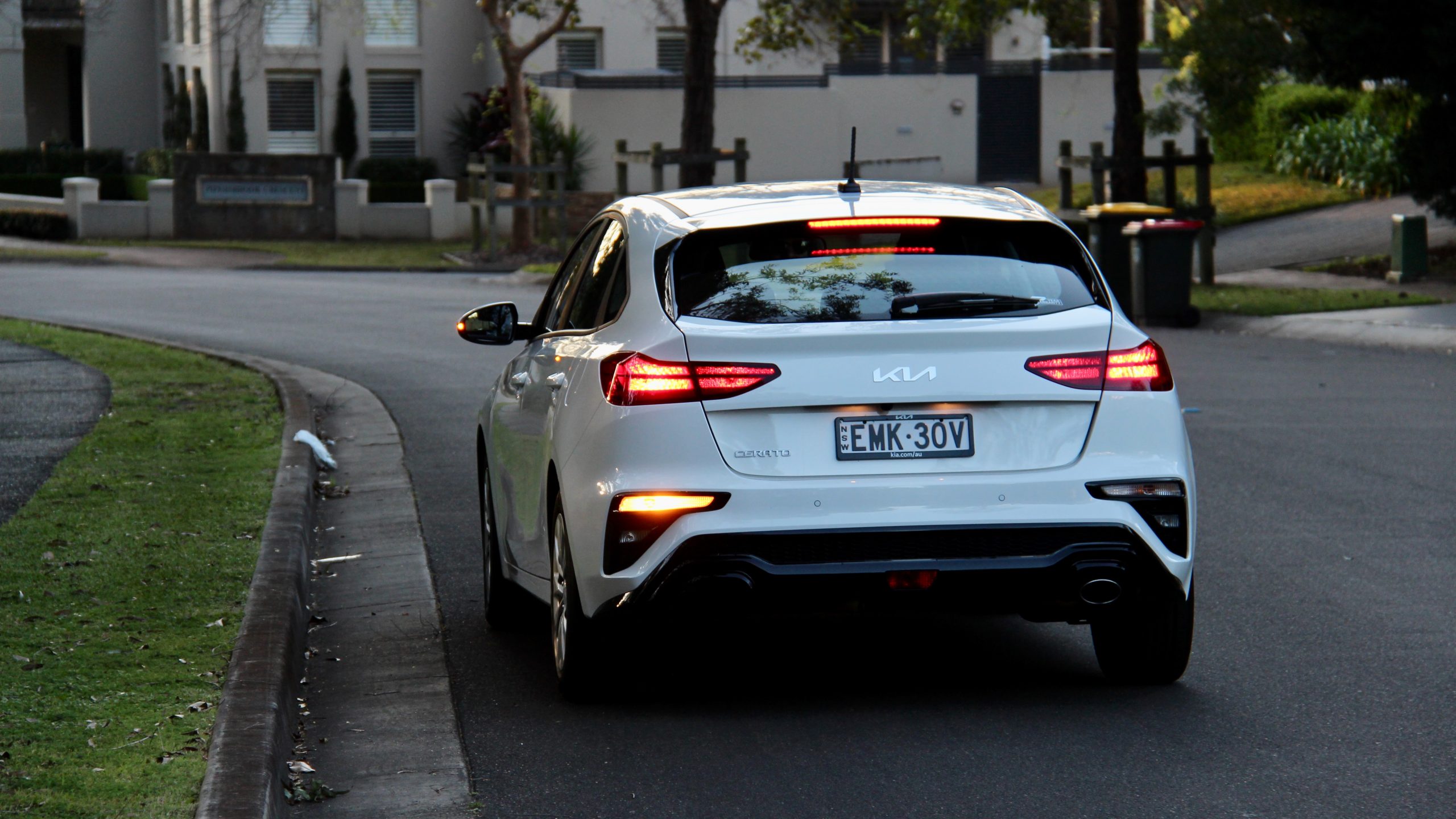
Kia claims a 7.4L/100km fuel consumption figure for the Cerato hatch, but after our week of mixed urban, suburban and highway driving in a combination of low and high traffic, we achieved 10.3L/100km, which isn’t great for this sized car. Helping costs is that the Cerato runs on 91RON regular unleaded and it has a 50-litre fuel tank.
Ride & Handling: 8/10
We found the 2022 Kia Cerato S to strike a good balance with the way it handles – comfortable, but assured. Kia’s local tuning of the Cerato to Australian taste has paid off well. While the steering has a nice sense of weight to it, it is light enough to make the Cerato feel agile and nimble while providing the driver with a good sense of connection to the road.
The suspension tune delivers a car that is soft enough to be comfortable, but not soft enough to ruin its handling. In terms of cornering ability, the Cerato can be driven around corners at faster than you’d think speeds without coming undone, and feels utterly safe and predicable when driven how most of the target market will drive it.
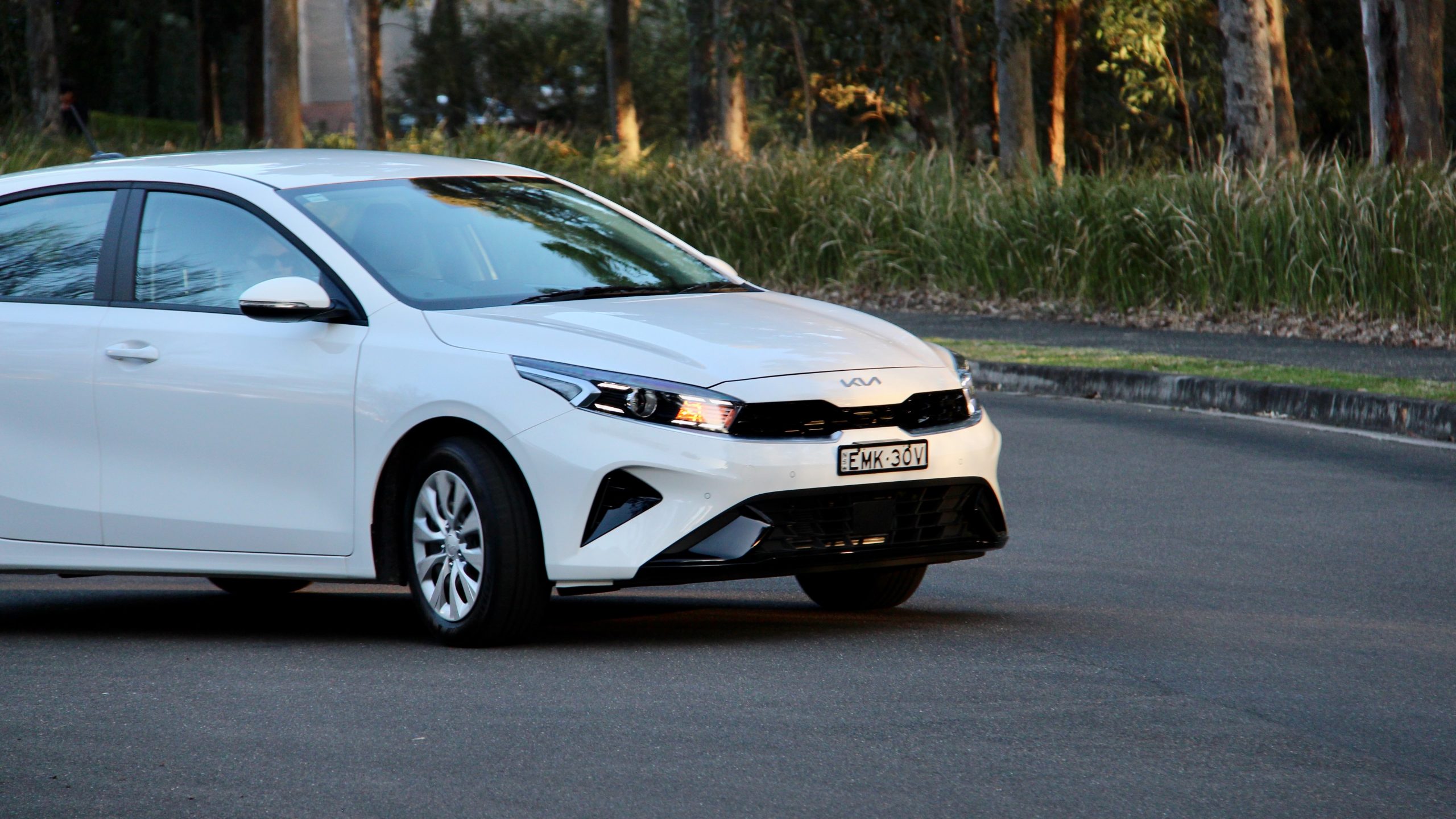
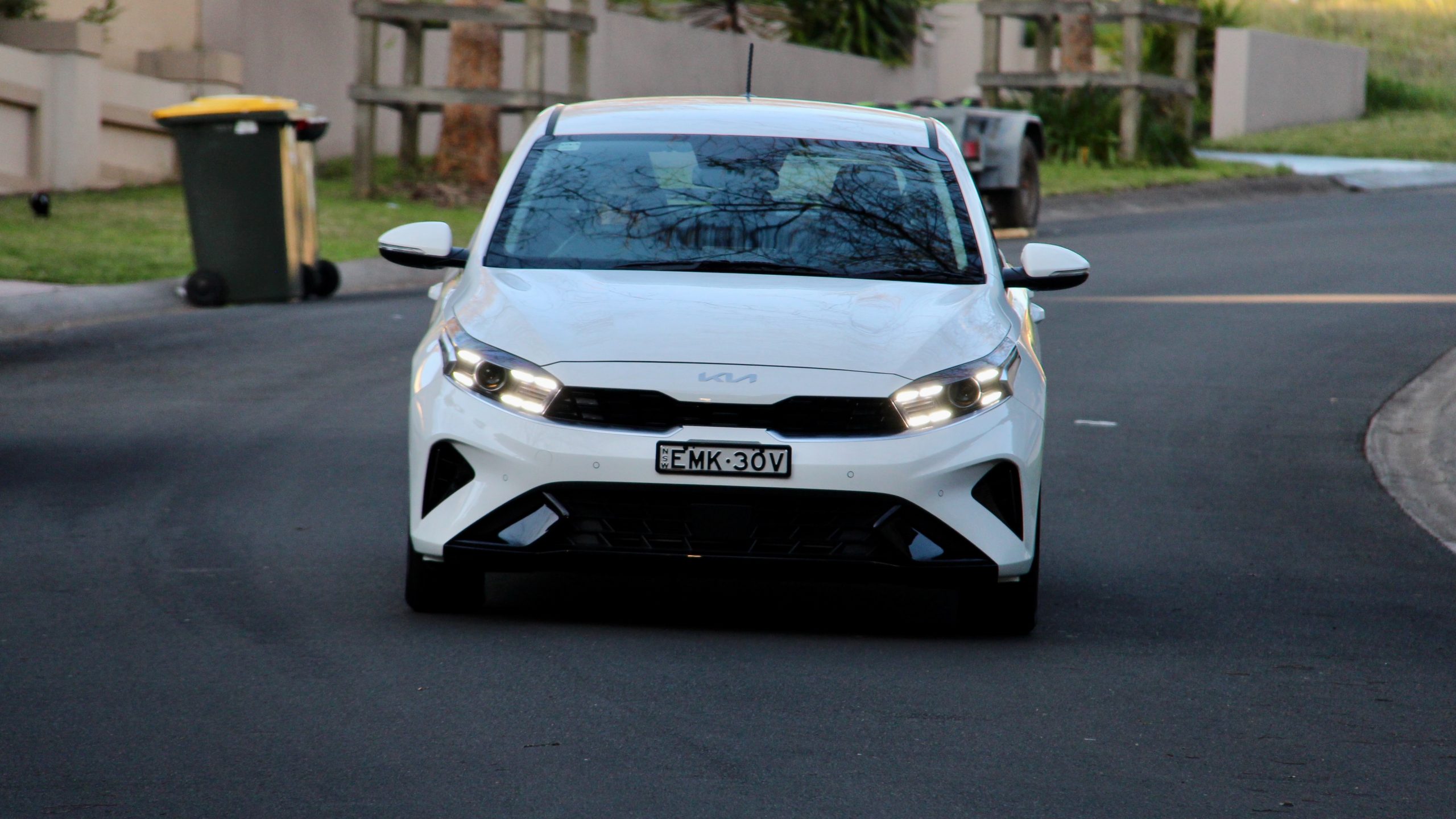
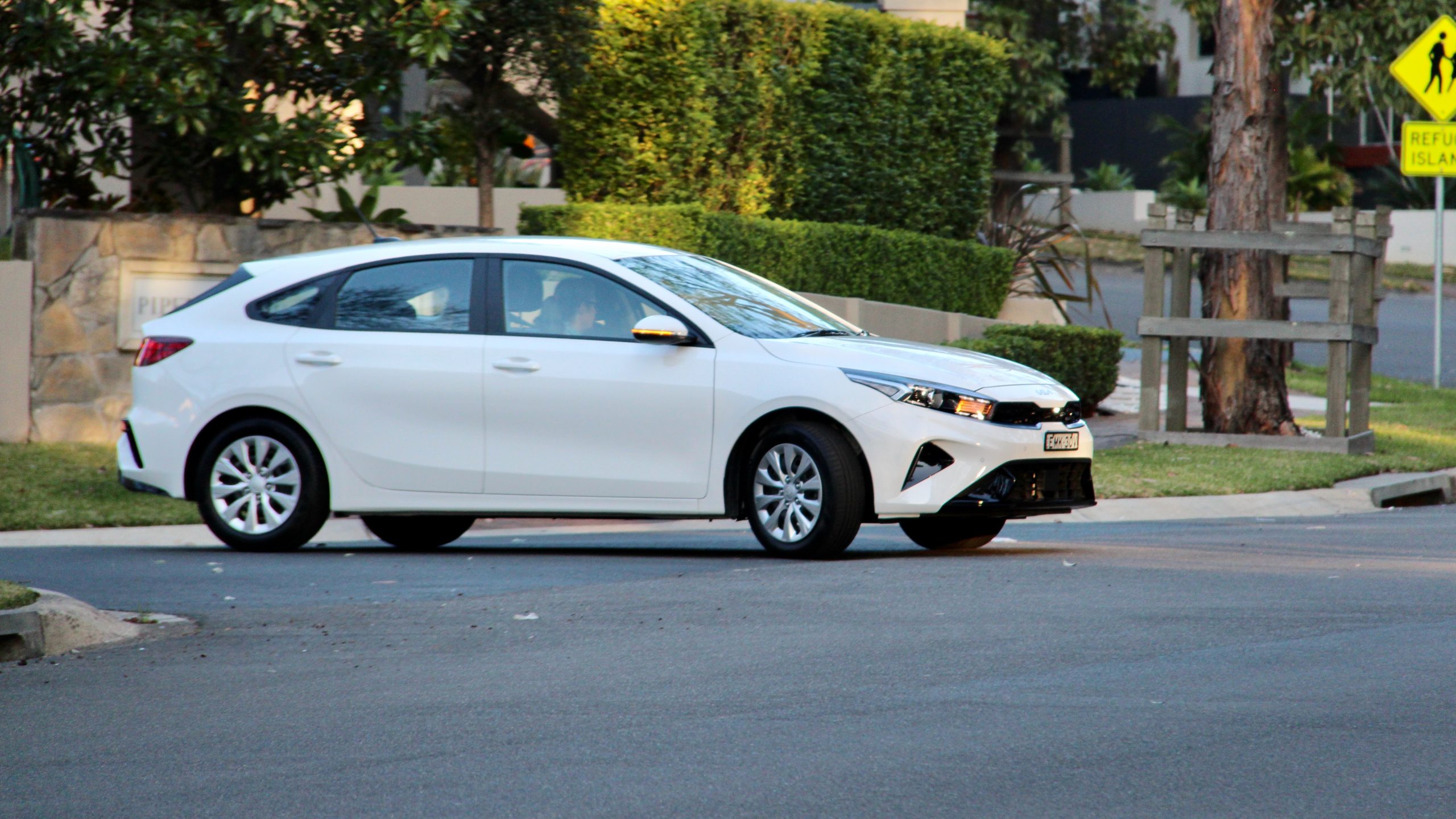
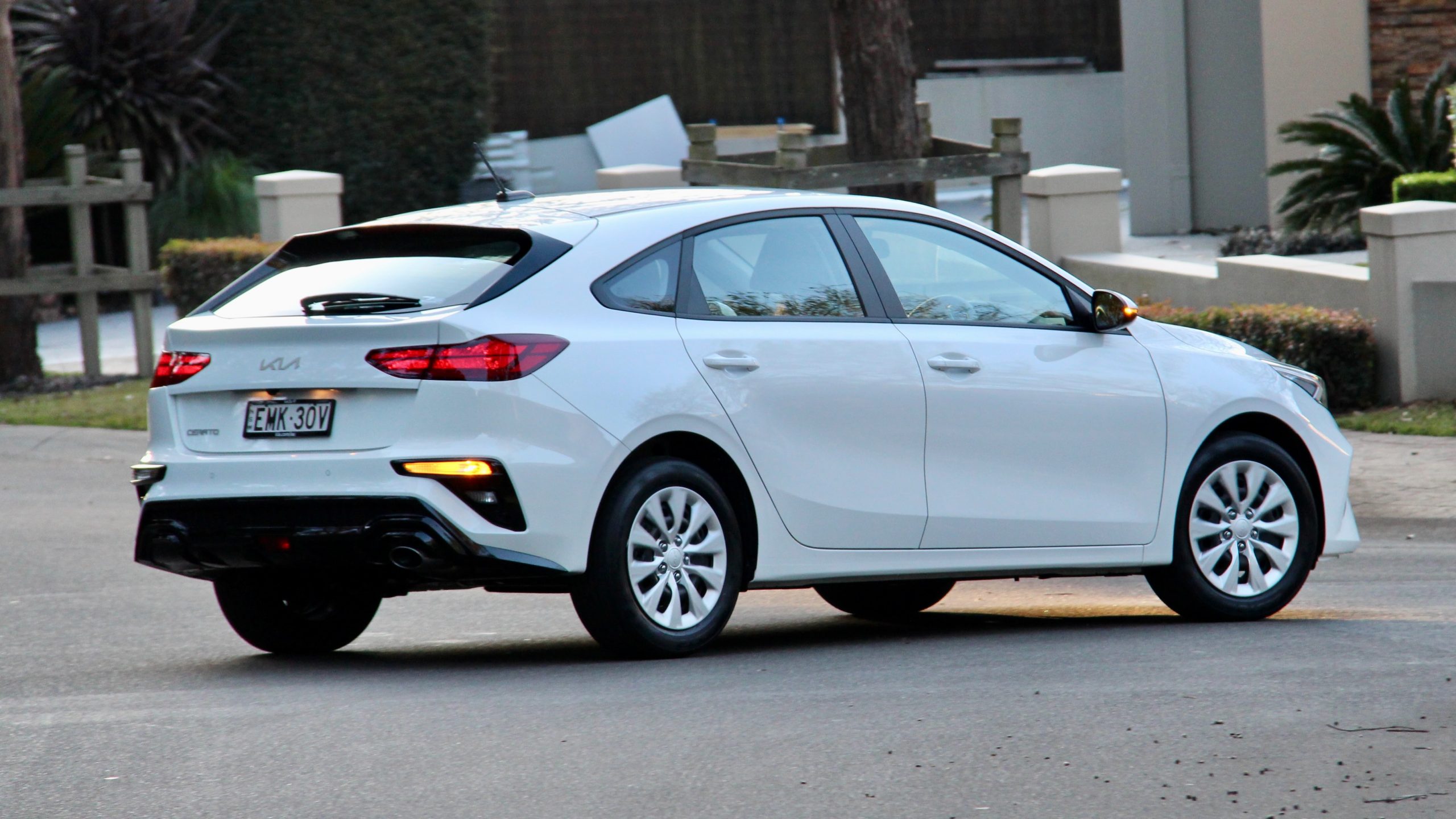
The ride might be slightly on the firm side for some drivers, but it’s nowhere near as firm as the Cerato GT, which we think in this case is a good thing! Most bumps and imperfections in the road are suitably dealt with, which is a good thing given the state of our roads! We can thank the suspension tune and the chunky 16 inch tyres for that! Road and wind noise is generally well suppressed, though tyre roar starts to get a bit intrusive at higher speeds – perhaps a touch more sound deadening could help out.
Interior & Practicality: 8.5/10
On the inside, the 2022 Kia Cerato S might not have the flashiest cabin in its class, but it’s certainly modern enough and very practical. Brushed metal highlights help to add interest to the design throughout The top of the dash is covered in a soft touch material, as are part of the doors and the centre armrest/console box cover. This combined with the leather steering wheel and gear shifter mean that most of the common touch points have a quality feel to them, though there is still plenty of hard plastic throughout the cabin. Build quality throughout feels solid, with no rattles appearing during our week with the car. The switchgear for the most part was of a high quality, with good tactile feedback, though the window switches felt a little cheap.
The front seats are comfortable and covered with what felt to be a hard wearing fabric. While the seats offered good support, they could have had a touch more bolstering to hold occupants in place better. The driving position was good, and the six-way seat adjustment and steering column adjustment both have enough range to help most drivers get comfortable behind the wheel. Visibility for the driver proved to be quite good, though the slope of the rear roof did impact a little.
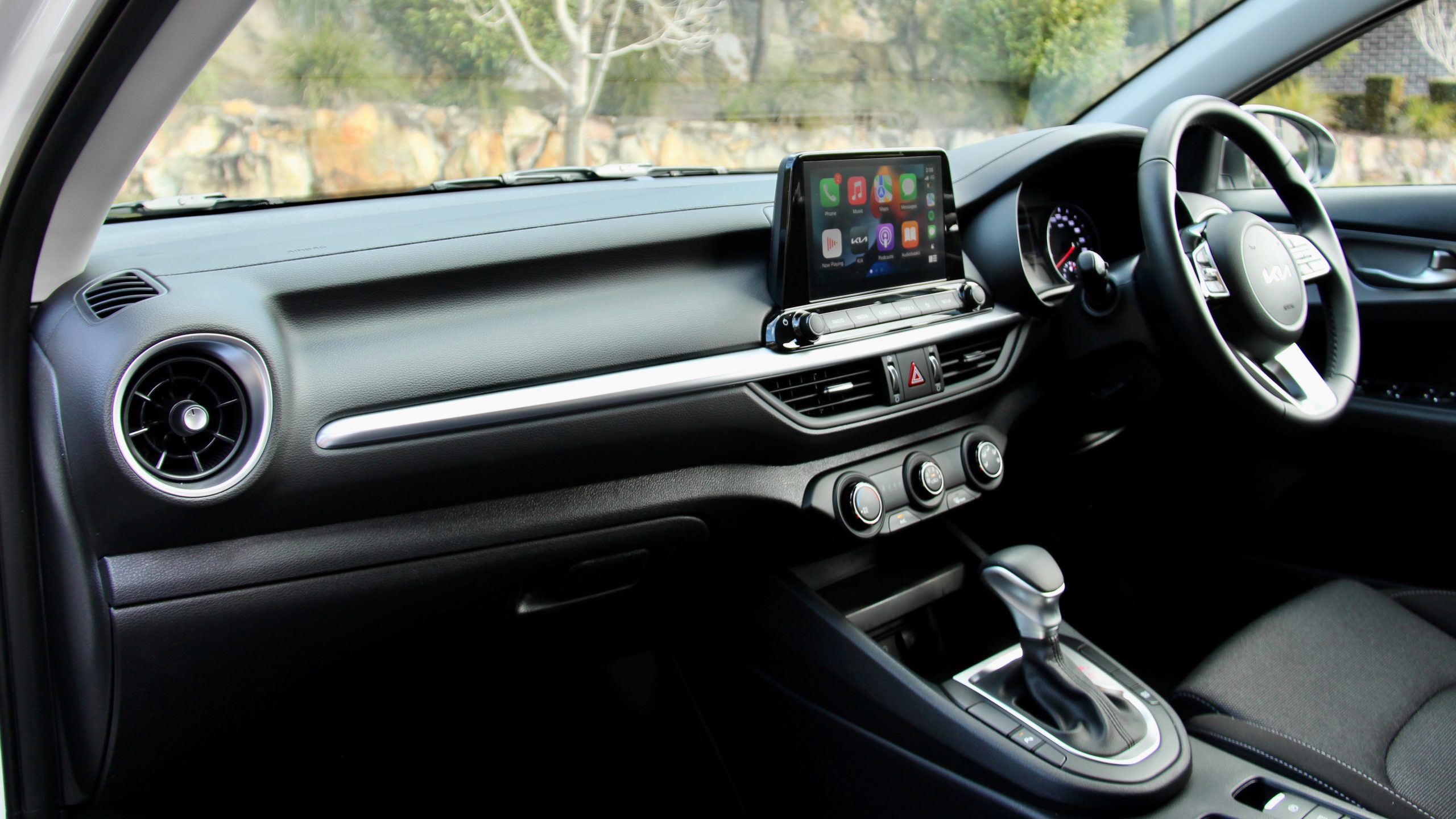
The logical layout of the dash was very easy to get a hang of. The air-conditioning controls are dead easy to use, and switchgear for important functions is all within reach of the driver. The instrument cluster itself features a small 4.25-inch colour driver’s display flanked by traditional analog dials which are clear and easy to read. Unfortunately the landscape orientation and poor layout limited the amount of driving information that the driver could be displayed at once – for example there was no way to have fuel consumption and the digital speedometer on screen at once. A larger display or better use of the existing one would really improve the experience.
Sitting at the centre of the dash is an 8.0-inch touchscreen, which handles infotainment. The screen is crisp and fluid to use and very quick to respond – as usual Kia proves itself as a master of screen technology! Phone mirroring by wireless CarPlay or wired/wireless Android Auto is supported, plus Bluetooth streaming, USB input and the obligatory AM/FM radio. The only thing we found ourselves wishing for was wired Apple CarPlay. While across the week, we didn’t experience any random disconnects while using wireless CarPlay, we found that it was impossible to get CarPlay to connect when there was no reception. For drivers who live or work in buildings with underground carparks, usually without reception, this connectivity issue could prove extremely annoying – if there was the option to use standard wired CarPlay instead, this issue would largely be negated.
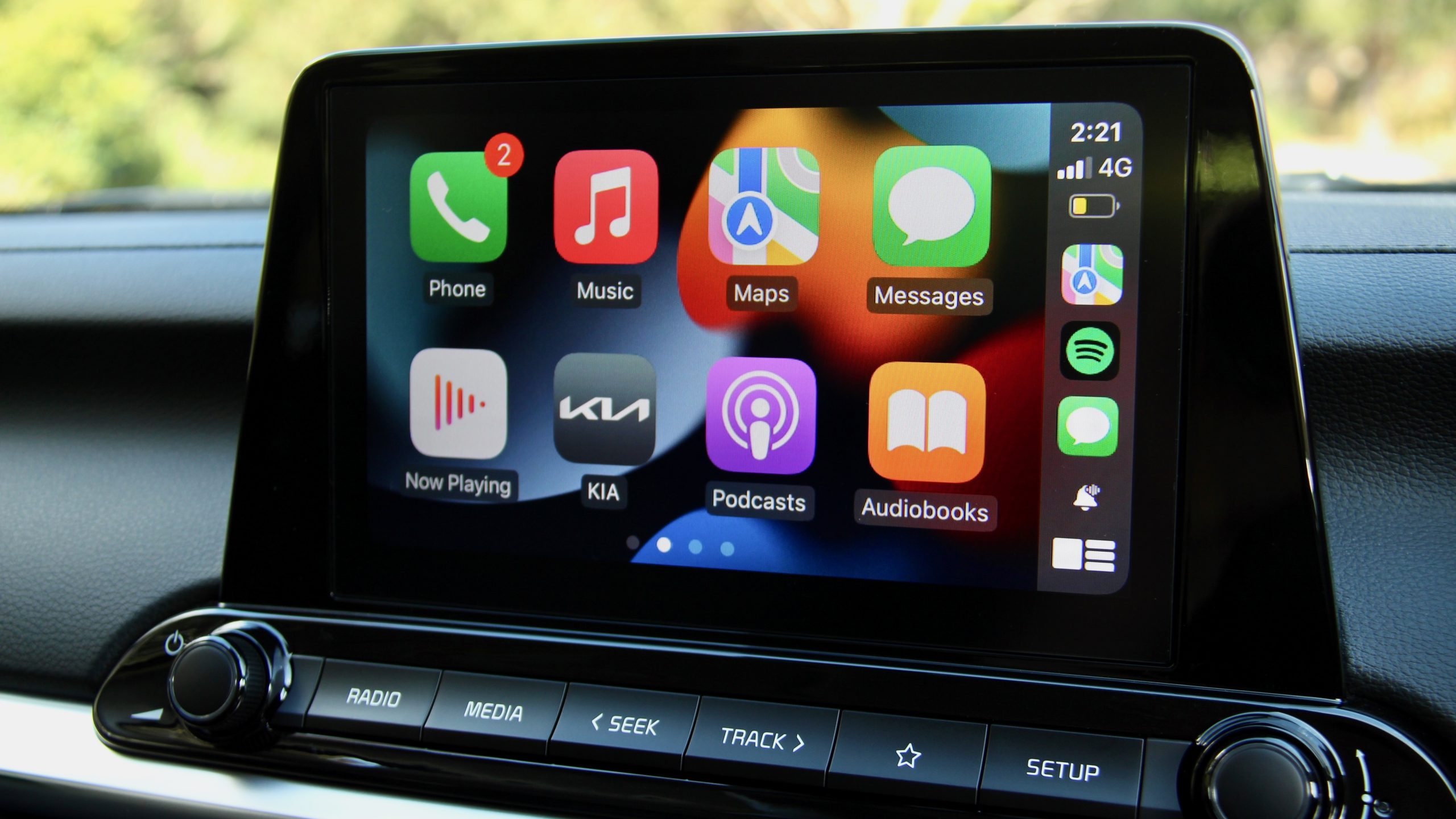
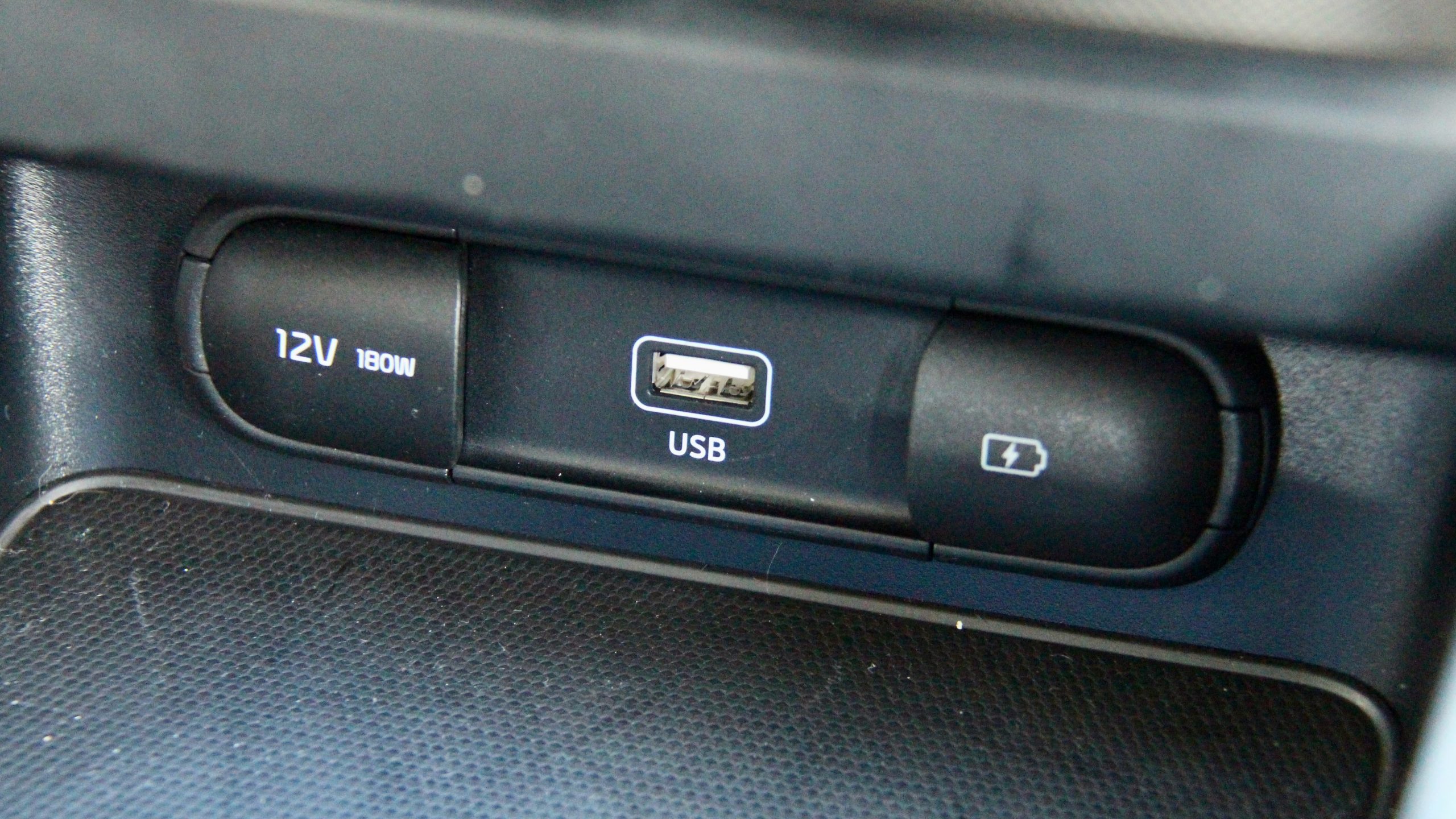
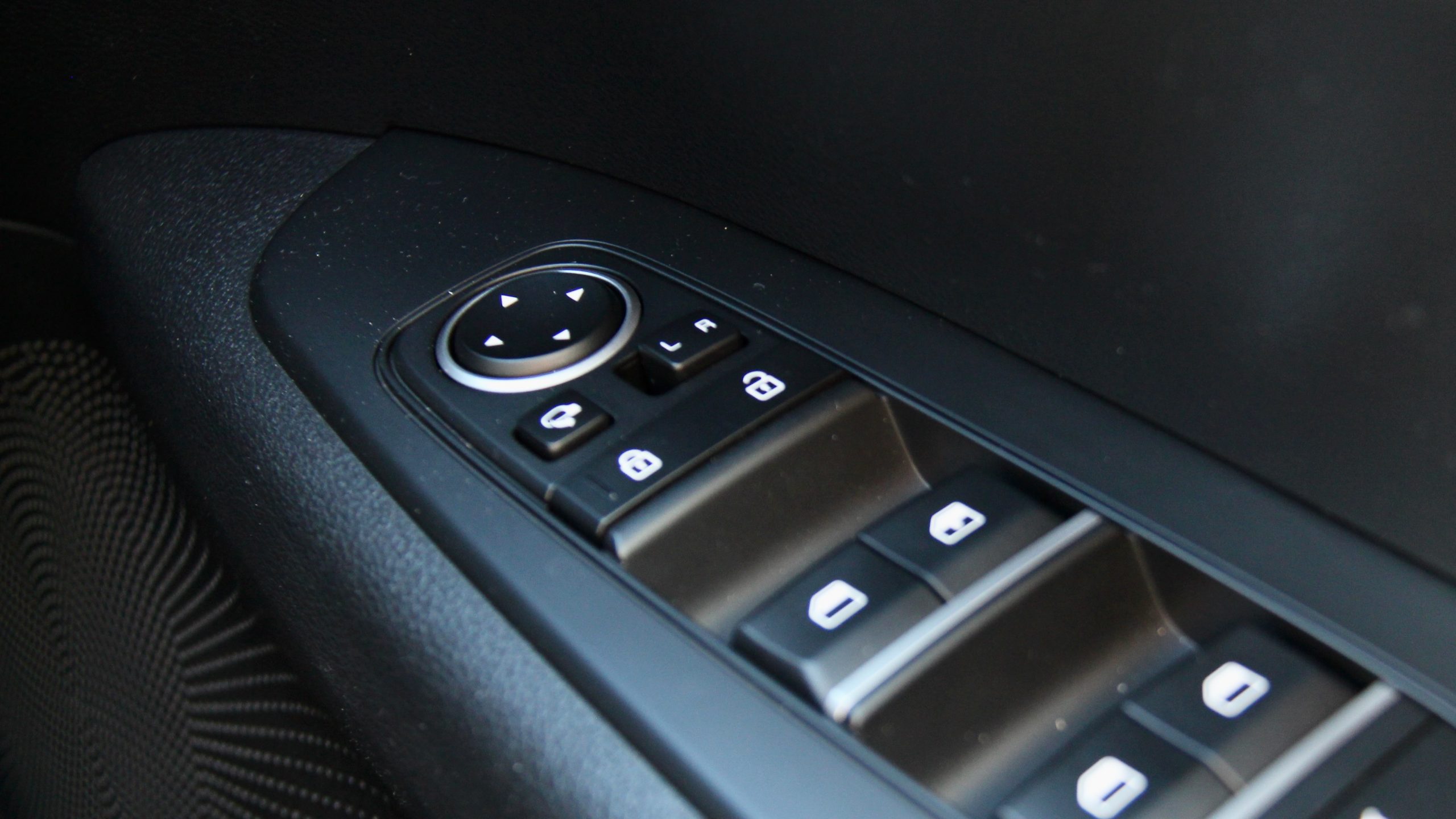
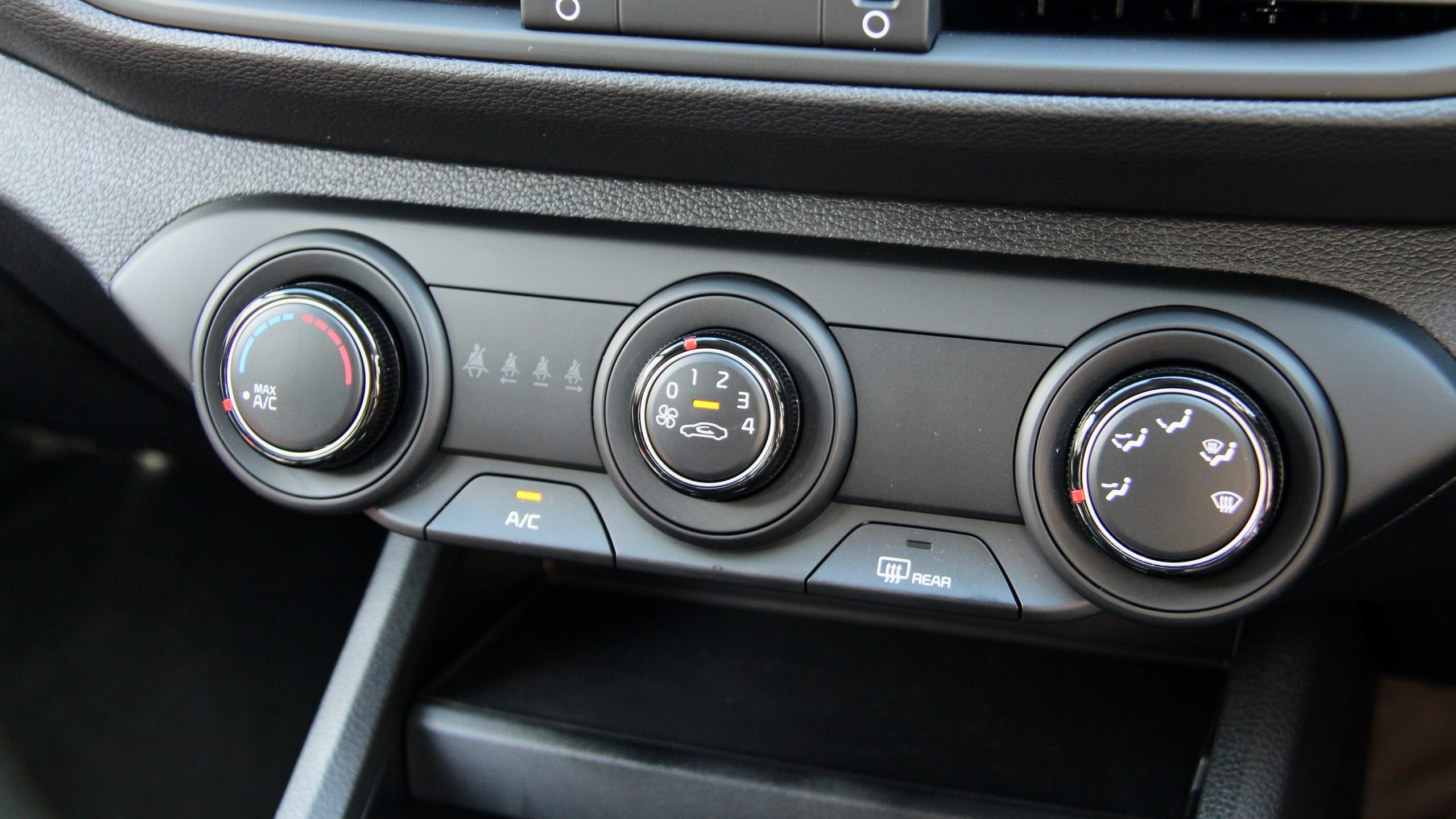
A row of physical buttons along the bottom of the screen are great for quickly navigating through the system, and the volume knob was very much appreciated to quickly change the volume without a heap of button pressed. We particularly love the custom ‘star key’ which drivers can set to a function of their own choosing. The reversing camera displayed an above average image quality – more than enough to get the job done, but perhaps not as sharp as the cameras we’ve become accustomed to in other Kia products. The camera combined with good rear visibility and the visual display for the parking sensors made parking a breeze.
Throughout the cabin there are plenty of storage places to be found, including: a large glovebox, dual cupholders, a reasonably sized centre console box, a sunglasses holder, medium sized door bins and two shelves under the A/C controls. We found the shelves particularly good for phone storage, giving both the driver and the passenger a place to stow even substantially sized smartphones.
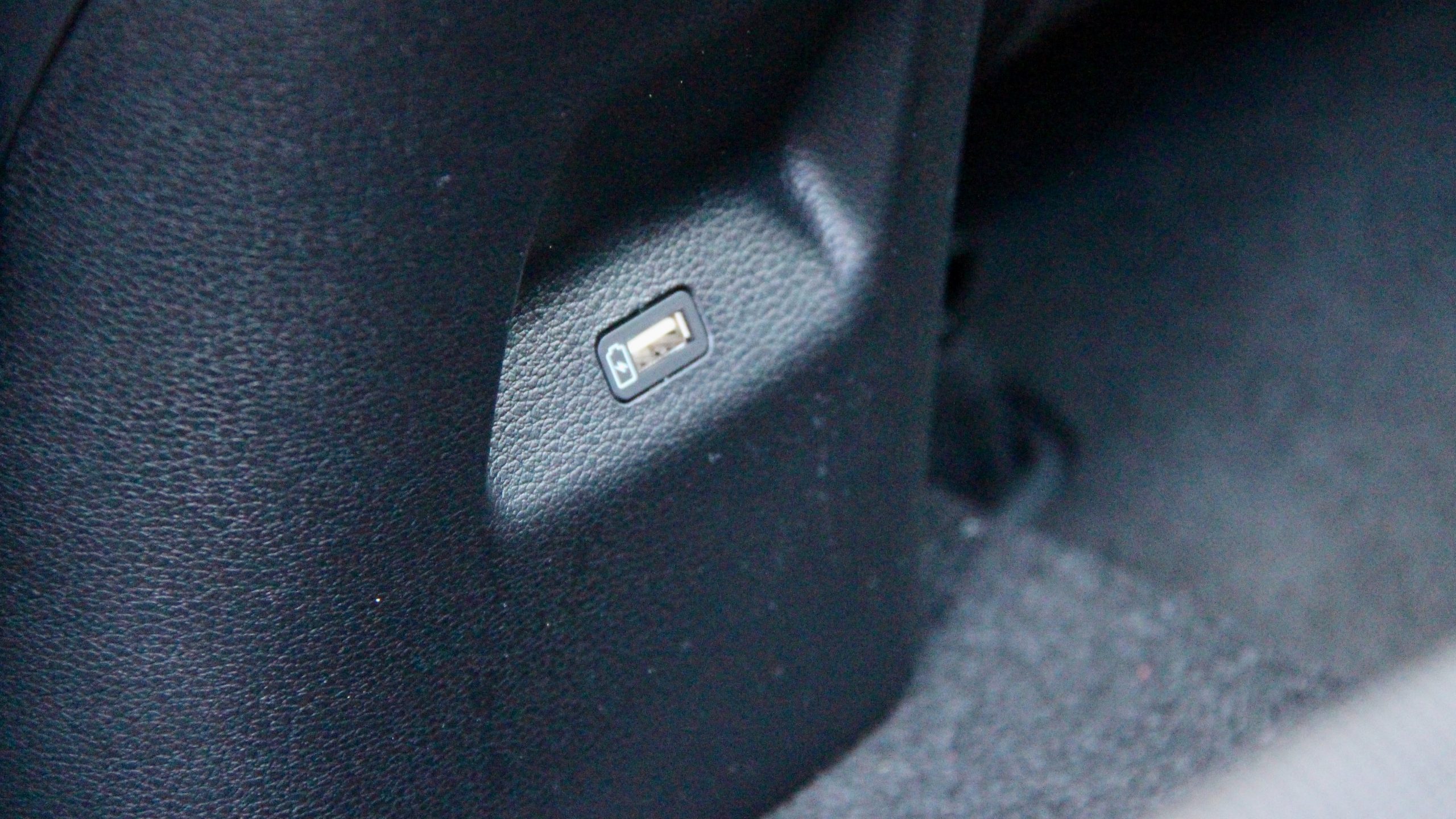
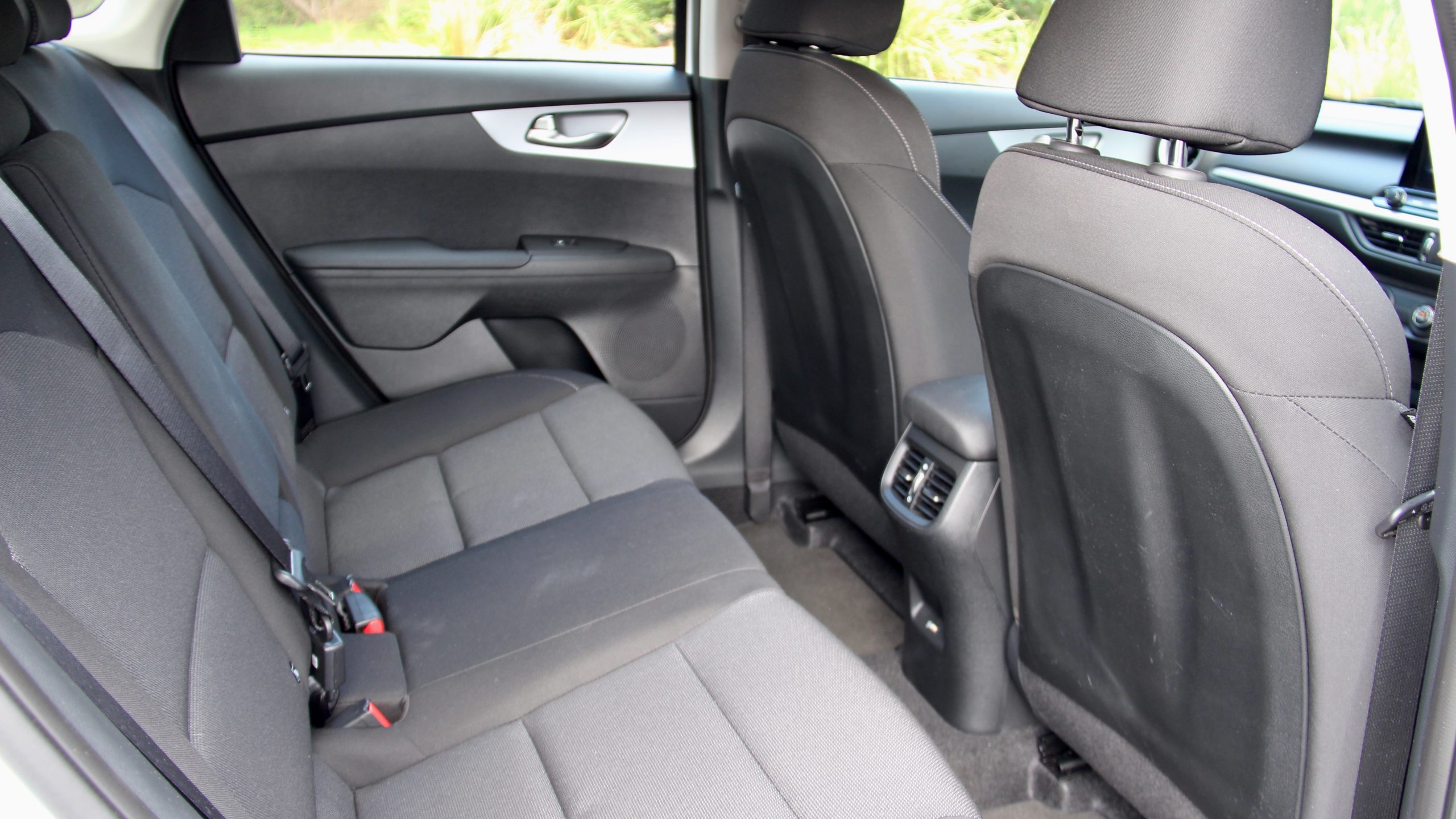
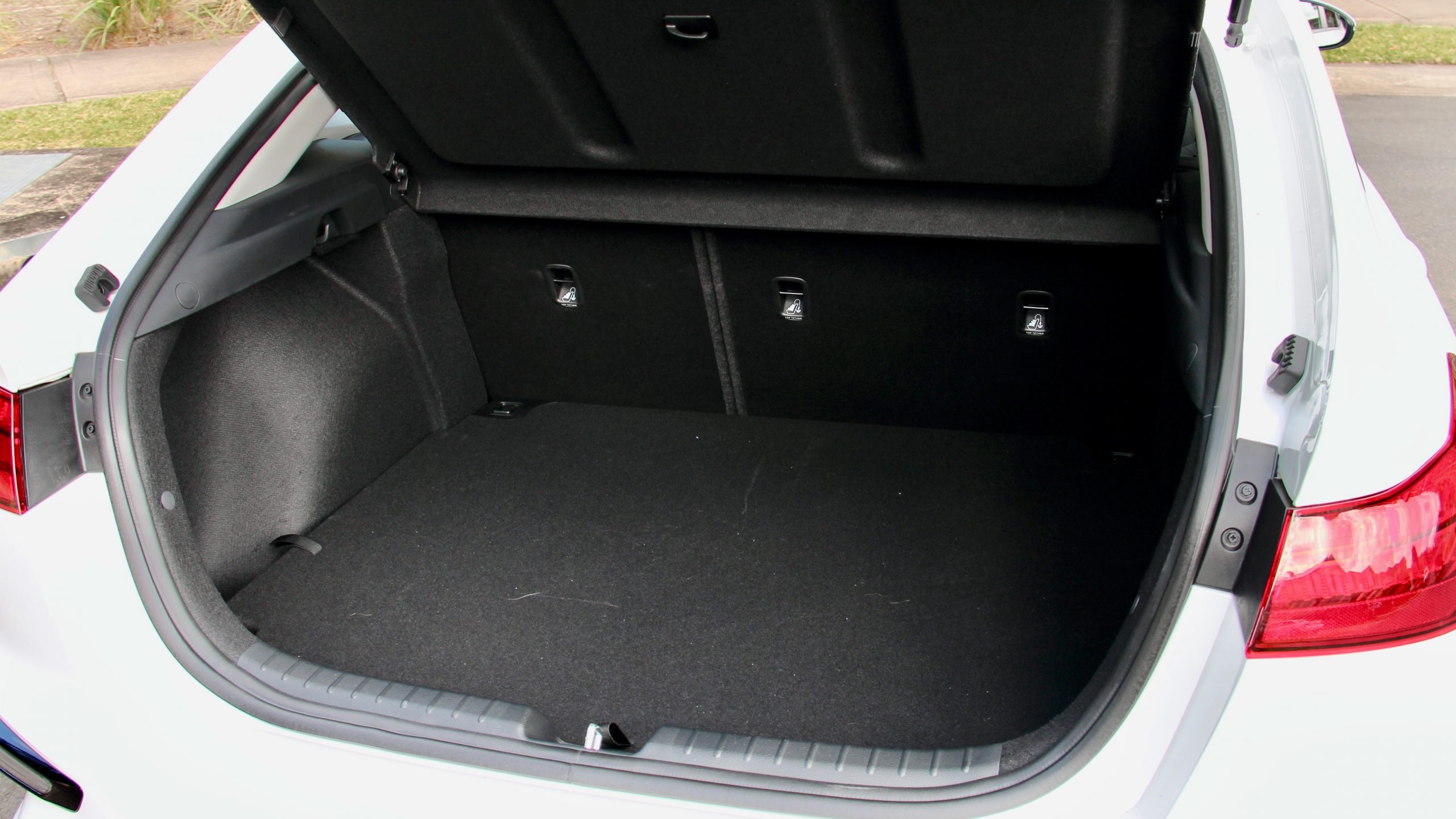
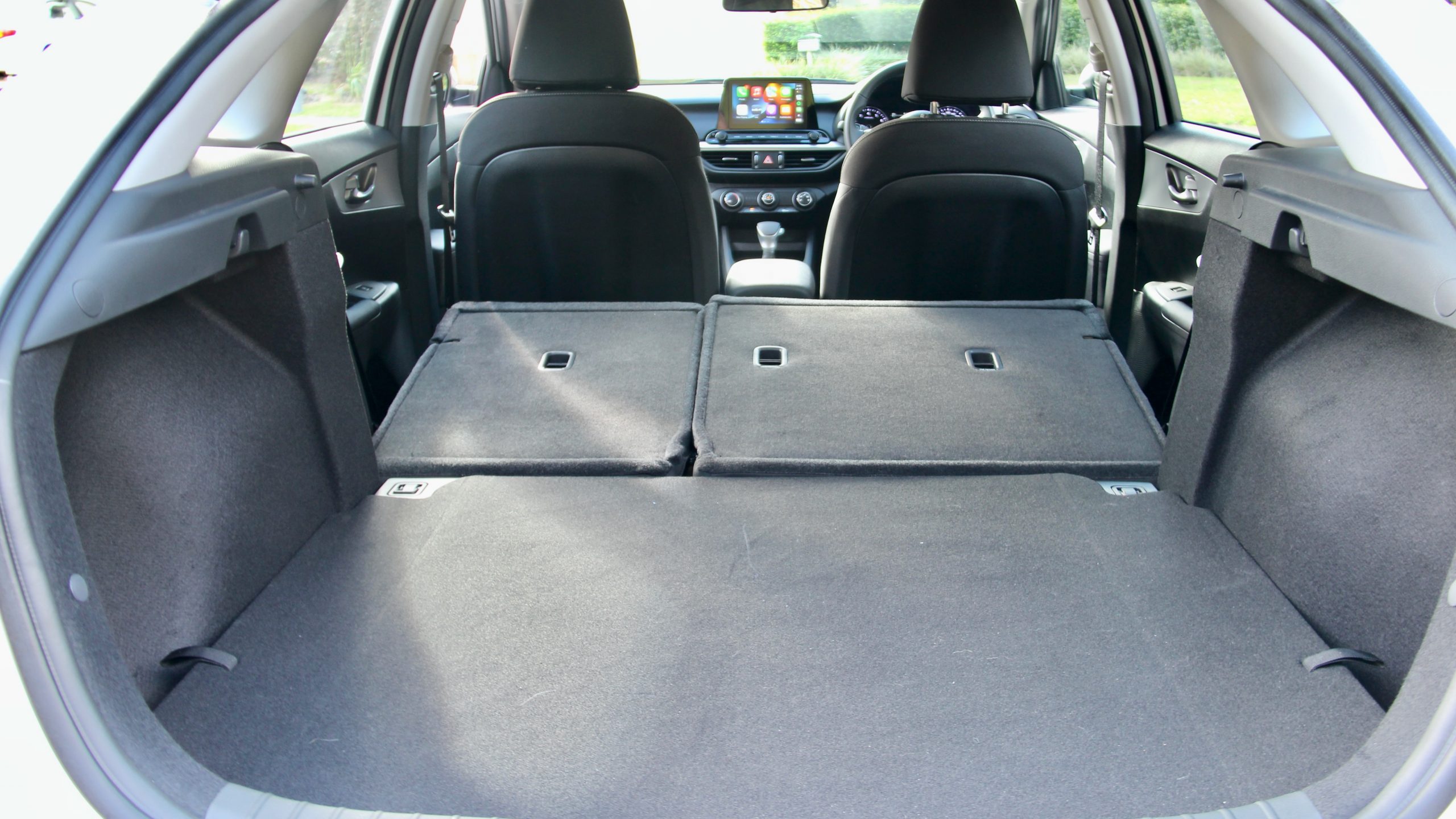
Moving to the rear row reveals a large (for its class) space. Compared to the tighter rear seating of the Toyota Corolla, the Cerato feels extremely spacious – the biggest difference being in leg and knee room. Two adults can very comfortably fit, and a third adult would be fine for shorter trips. Even though the slopey roof might suggest tight headroom, most adults under six-foot will have more than enough space. Taller adults might feel a bit constricted, however. Rear air vents and a USB charging point offer more comfort and practicality to the rear seat than many other similar sized vehicles.
Things only get more impressive when the boot is opened to reveal a class leading massive near sedan sized 428-litre boot. Compared to the paltry Toyota Corolla (217L), Mazda 3 (295L) it’s substantial. – it even edges out the i30, which is still large for class at 395L. The rear seats fold 60:40, but don’t lie completely flat – Kia doesn’t give a figure for the expanded luggage capacity when the seats are folded, but suffice to say, it’s substantial. Besides the huge space, there aren’t many other features in the boot besides two hooks on either side and under floor storage. Under the boot floor sits a space saver spare.
Service & Warranty: 8/10
Service intervals for the 2022 Kia Cerato S are once-yearly/every 15,000kms, whichever comes first – matched by the Toyota Corolla and the Hyundai i30. Kia’s capped price service program brings service costs for the first 5 services to a total of $1999, which is expensive compared to $1495 for the i30 and $1025 for the Corolla over the same period. That being said, the Cerato does receive an extra two capped price services over the Hyundai and Toyota.
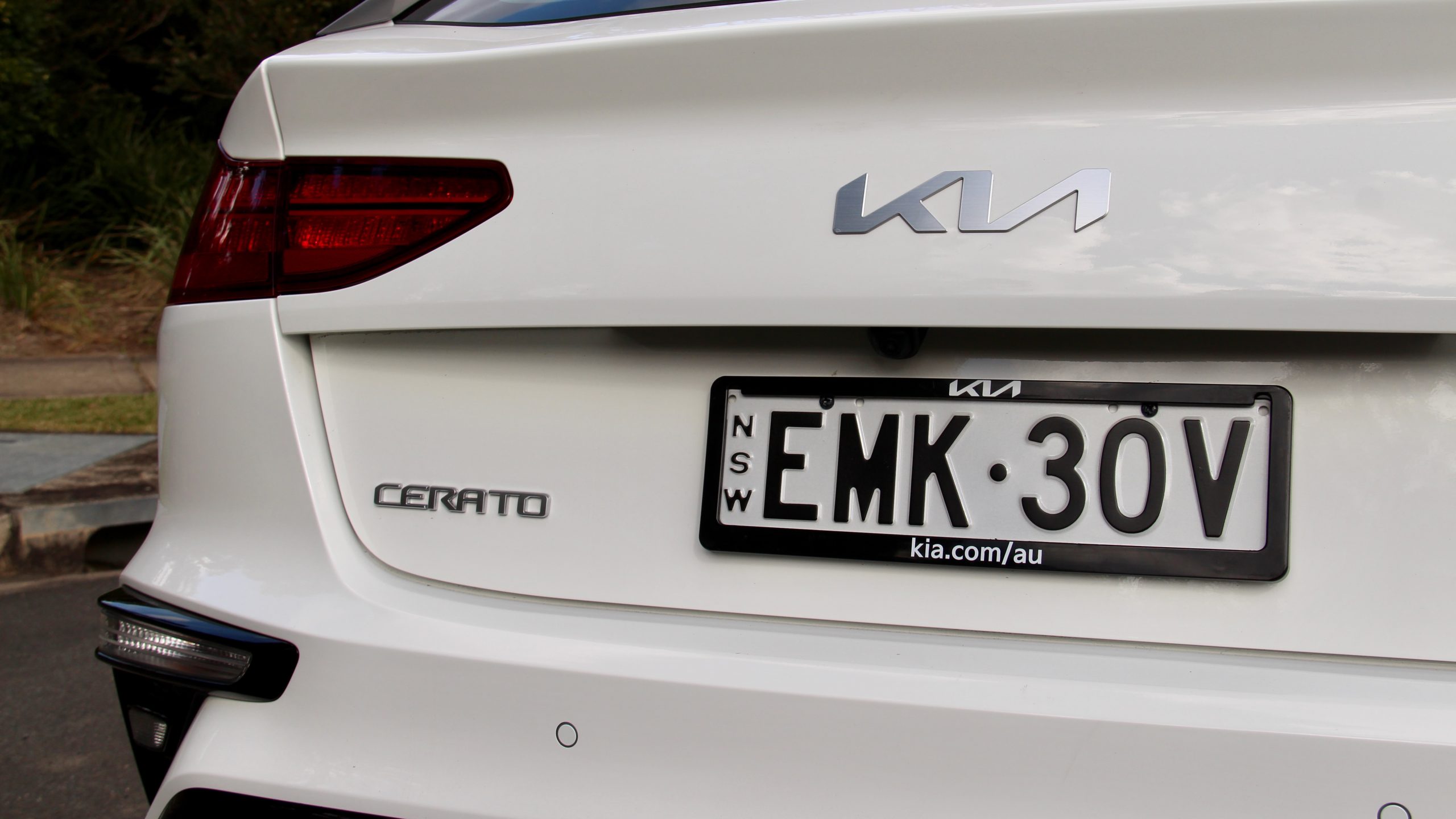
Warranty coverage for the Cerato is for seven years/unlimited kilometres, which is the best coverage in class. The Toyota Corolla and Hyundai i30 both have a five year/unlimited kilometre warranty (though Toyota extends its warranty to seven years for the drivetrain if proper logbook specified servicing has been carried out). Kia includes twelve months of free roadside assurance with the Cerato – drivers can extend this up to eight years, by servicing their Cerato on time at a Kia dealership – each scheduled service adds an additional twelve months of coverage. Hyundai offers an identical scheme for the i30 but Toyota doesn’t offer any free roadside assistance with the Corolla at all.
2022 Kia Cerato S Hatch with Safety Pack DiscoverAuto Rating: 7.9/10
While it might not be the cheap and cheerful hatchback it used to be, Kia has managed to come up with one of the best all-rounders in class with the 2022 Kia Cerato S. While it’s weighed far more towards safety, practicality and ease of use, the Cerato is still a better car to drive than you’d expect. The interior with its large rear seat space and massive boot sets it aside from rivals and the long list of safety features (courtesy of the Safety Pack) make it a pragmatic choice.
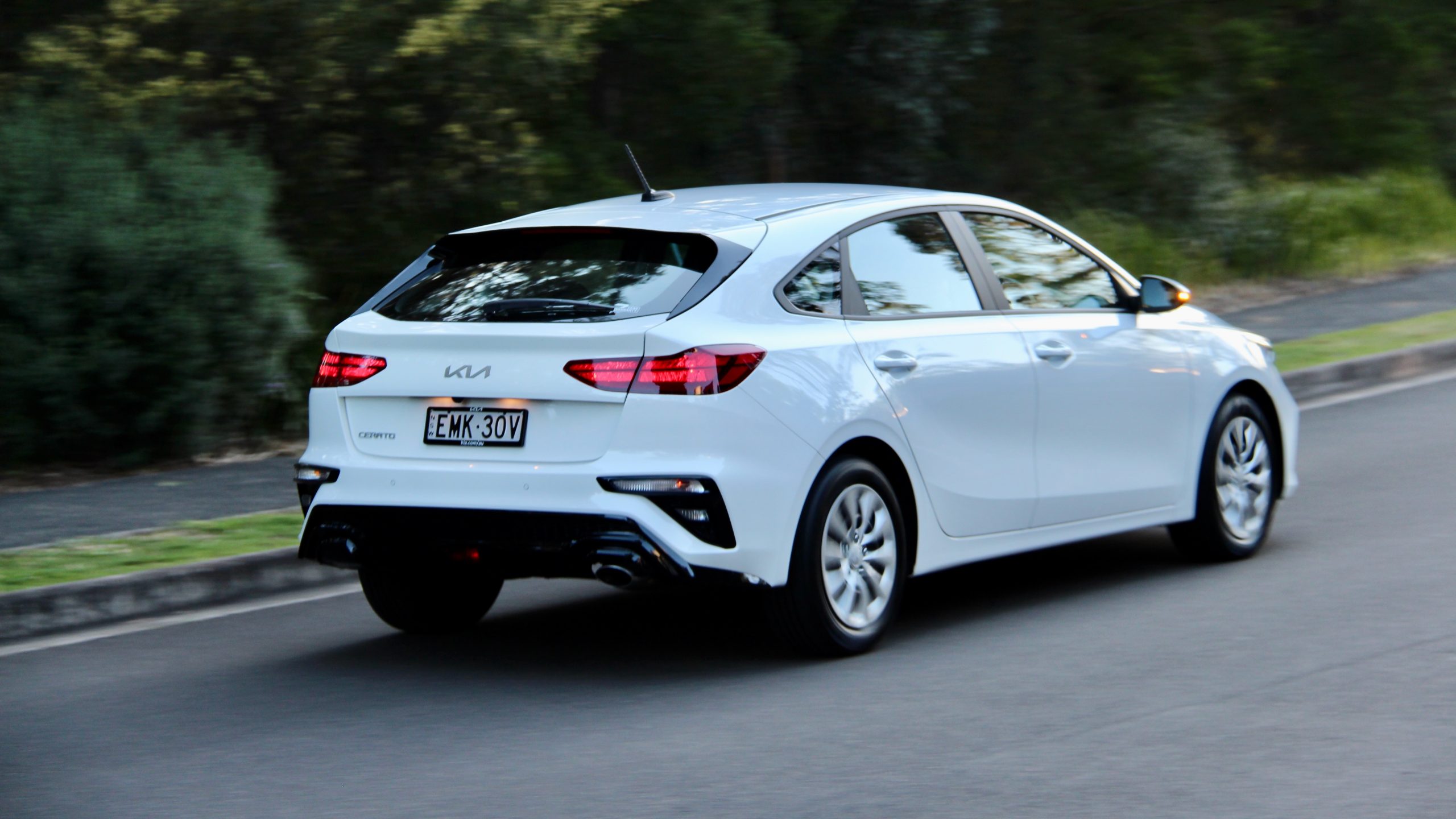
The biggest letdown of the Cerato is perhaps the thirsty and somewhat unrefined engine – especially in 2022 when petrol prices are hardly cheap. A more modern and efficient engine plus a couple of interior tweaks and feature additions would make what is already a very solid choice, an even easier one to make.
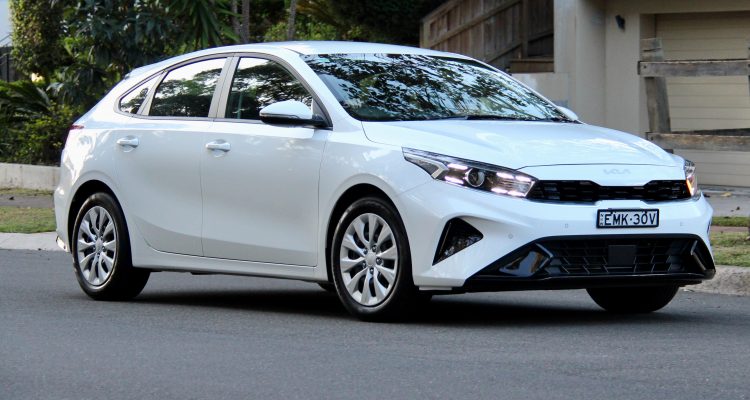
Leave a Reply